Content can be downloaded for non-commercial purposes, such as for personal use or in educational resources.
For commercial purposes please contact the copyright holder directly.
Read more about the The Creative Archive Licence.
Description
The diary of Elizabeth Baker provides a fascinating insight into the social life of the market town of Dolgellau and district during the period between 1779 and 1786; indeed, it was described by Ben Bowen Thomas as 'a mirror of the time'. Elizabeth's diary spans ten volumes, only the first volume of the diary (1779-1782) is shown here.
Elizabeth Baker was born c. 1720 in Warwickshire. Very little is known about her early life until 1766 when she is known to have been staying in London with a Mrs. Gilbert at St. James' Square. Elizabeth Baker's association with Dolgellau began in c. 1770 when both she and Mrs. Gilbert became entitled to the proceeds of a Pimlico lease, and a patent to mine on Crown Lands in central Merionethshire was made out in their joint name. The women admitted two others into equal shares of their patent rights and on 25 July 1770, Elizabeth Baker left London for Dolgellau to make the necessary plans to exploit the mining rights. She never returned. On her arrival in Dolgellau, Elizabeth stayed with Lewis Jones, the local carrier and postman, who brought her into contact with Hugh Vaughan, the squire of Hengwrt. Despite making a promising start, the lead mining venture soon ran into trouble and financial support from her business partners in London was slow in arriving. Elizabeth soon ran out of money and was asked to leave her lodgings, but by 1771 Hugh Vaughan had offered her a place at Hengwrt. Elizabeth took on the role of his personal secretary and soon found herself assisting Hugh Vaughan with his financial and legal affairs. By 1778, however, Hugh Vaughan had been declared bankrupt and Elizabeth was forced to leave Hengwrt. The contents of the house were sold at auction, but she assisted in the work of dispersing some of the more valuable possessions, including moving manuscripts and books to the neighbouring estate of Nannau.
The diary begins at this time of trouble. By 1779, Elizabeth had left Hengwrt and moved to the neighbouring dower house of Doluwcheogryd, before the bailiffs moved her on to Bryn Adda, on the other side of the valley. Mrs. Griffiths, her landlady, was friendly with Miss Catherine Vaughan, Hugh Vaughan's sister. Following Mrs. Griffiths's death in 1784, Elizabeth moved to a small cottage in Dolgellau where she spent the rest of her days.
The diary contains much information relating to the attempts of Hugh Vaughan to re-establish his fortune. In 1783, however, Hugh Vaughan died at Rhûg, Corwen (an estate which his brother, Robert Howell Vaughan, had inherited in 1780) and following several years of litigation, the Hengwrt estate was finally restored to Robert Howell Vaughan in 1788. During these long years, Elizabeth lived in poverty, and was completely dependent on local charity and occasional financial assistance from London. In addition to chronicling these events, Elizabeth wrote in detail about the social life of the people of Dolgellau and the neighbouring districts. She describes the lifestyle of the local gentry families, but also provides an eye-witness account of many of the customs of the lower social orders. There are detailed descriptions of the eating and drinking habits of the period, household tasks and social events, such as weddings, funerals and local festivities. Although she made Dolgellau her home, Elizabeth remained very much an outsider: she continued to receive parcels of London newspapers and seems to have acquired very little knowledge of Welsh, the language of the overwhelming majority of the local population. Elizabeth's diary ends on 31 March 1786; very little is known about her between that time and her burial at Dolgellau on 26 November 1789.
Source: Ben Bowen Thomas, 'The Old Order, based on the Diary of Elizabeth Baker' (Cardiff, 1945).
Further reading: Simone Clarke, 'Visions of Community: Elizabeth Baker and Late-Eighteenth Century Merioneth' in Michael Roberts and Simone Clarke (eds.), 'Women and Gender in Early Modern Wales' (Cardiff, 2000).







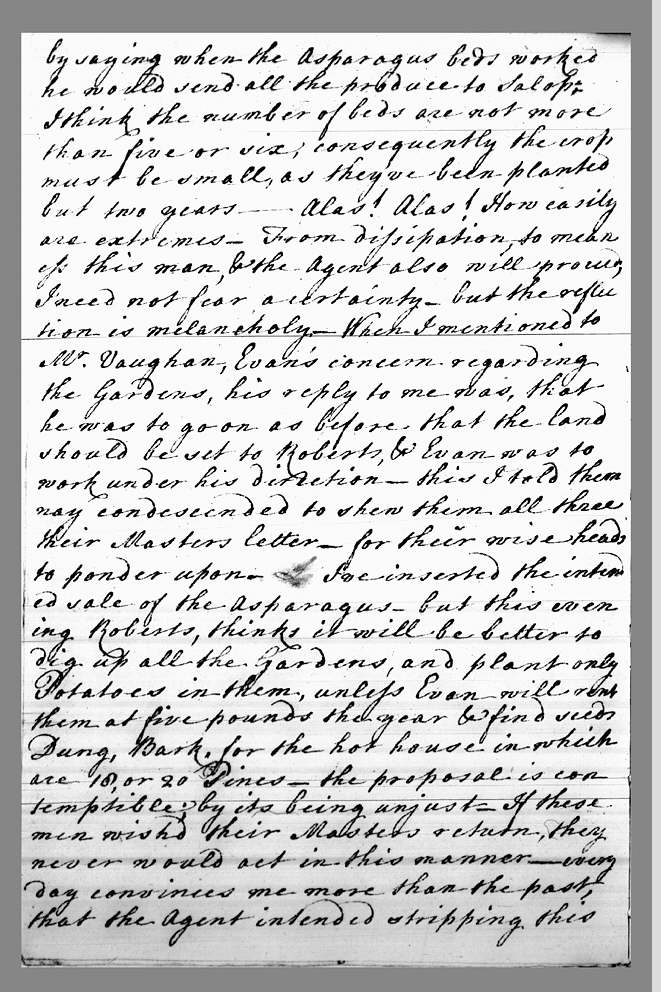

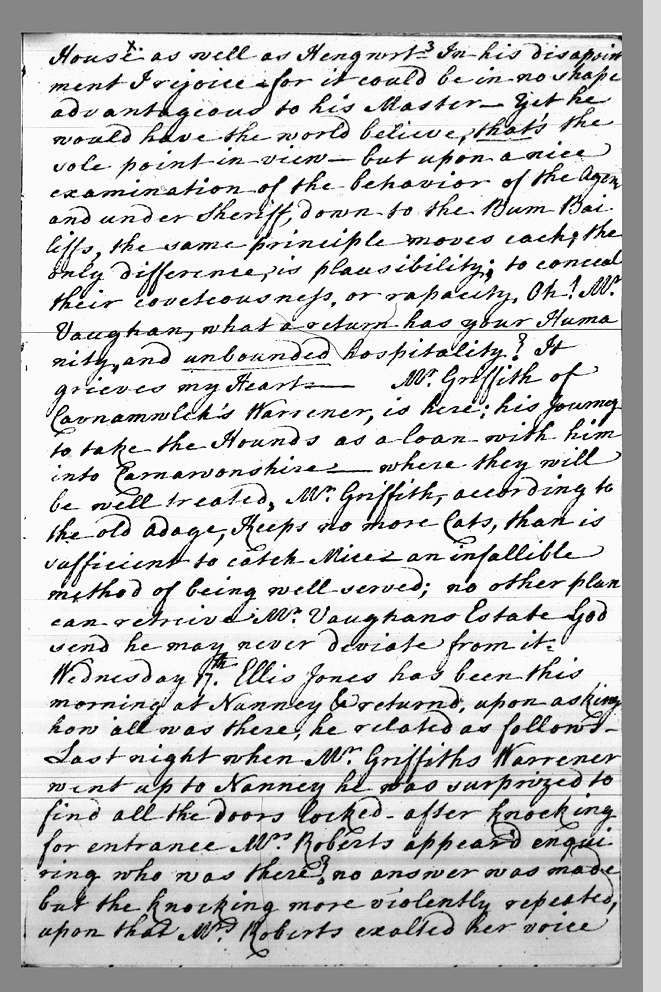



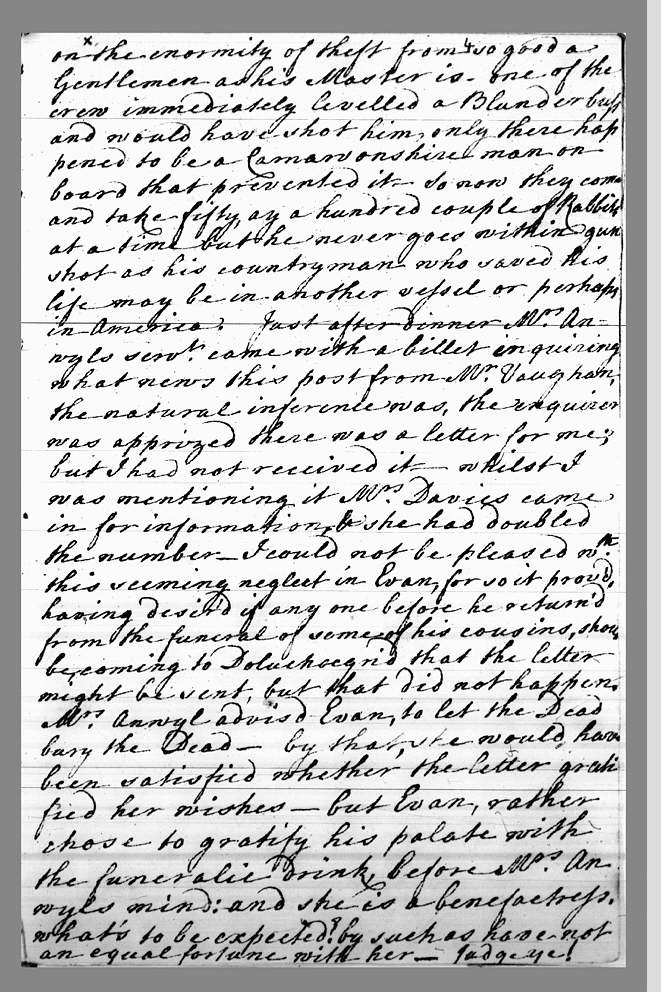

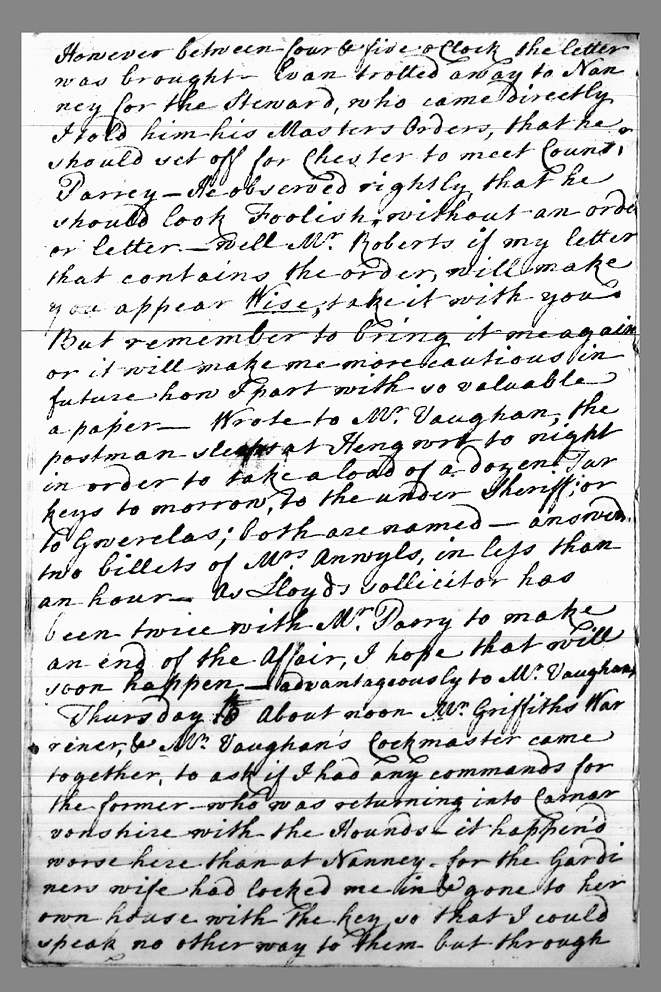

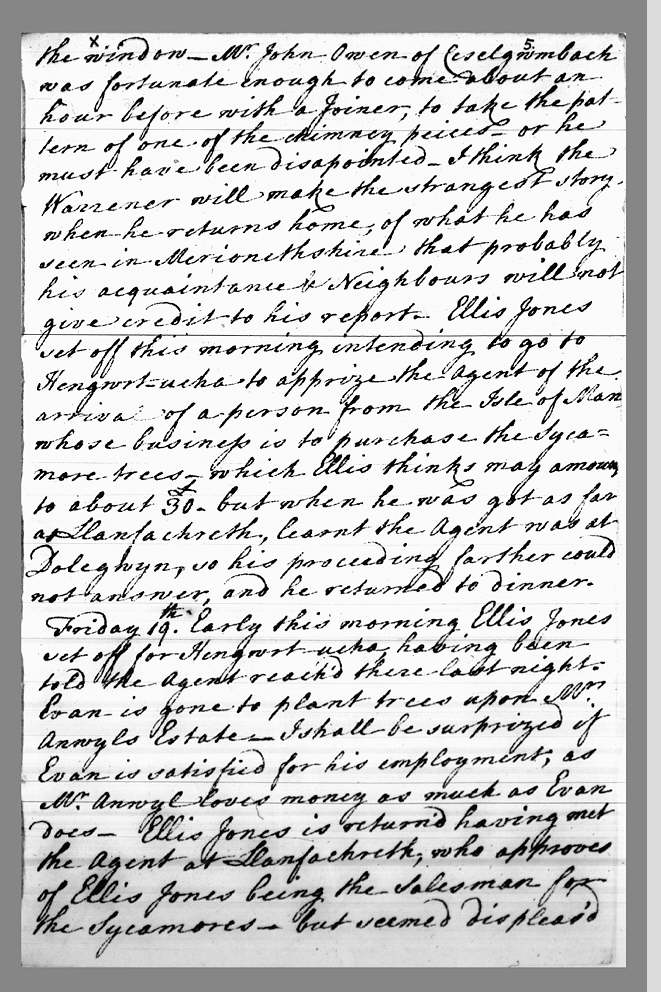

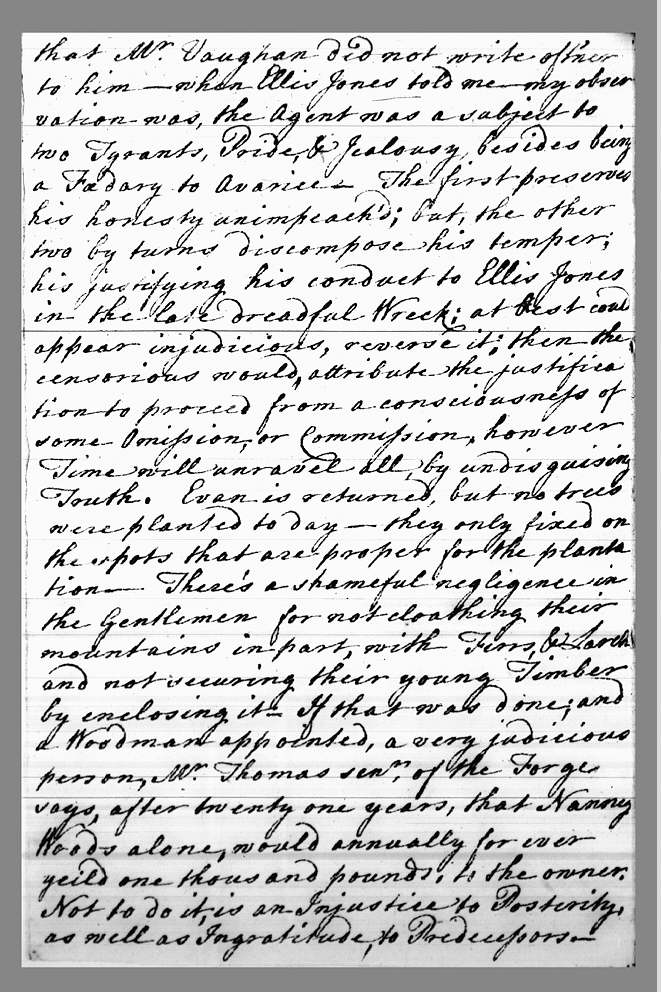

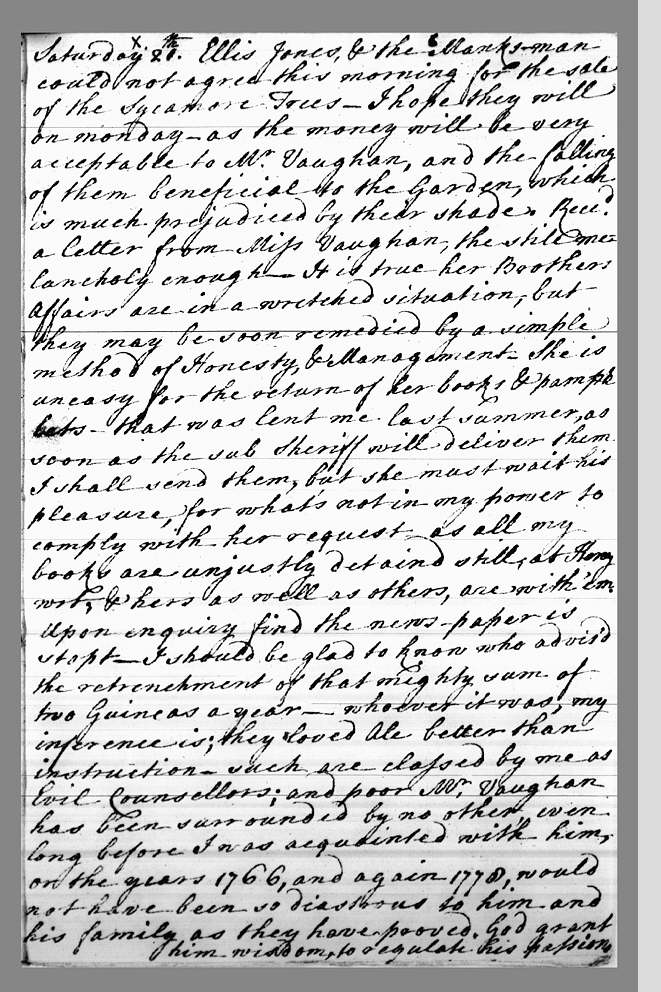







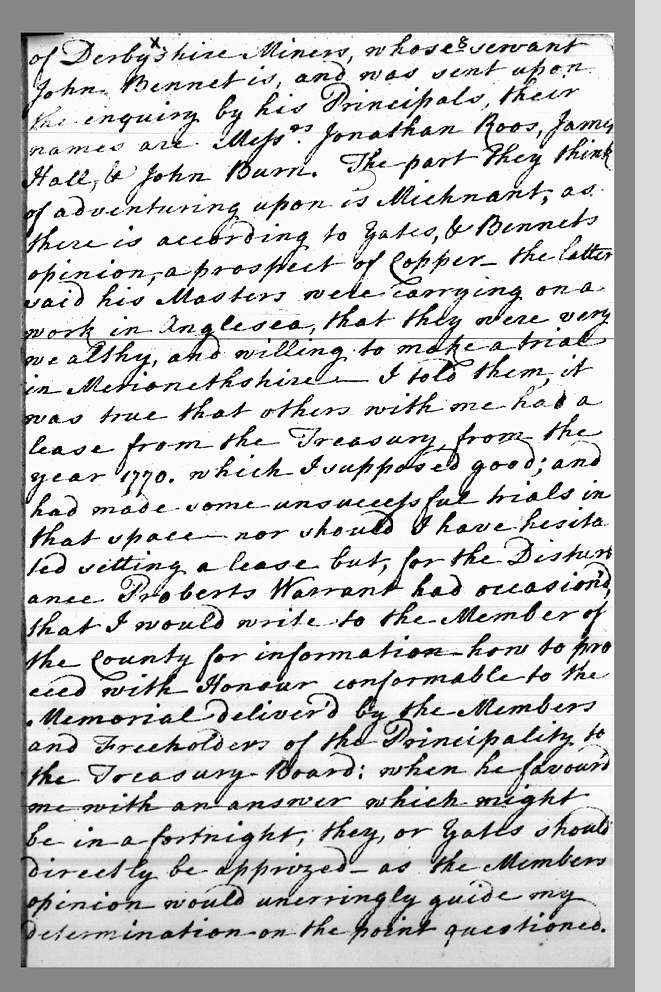

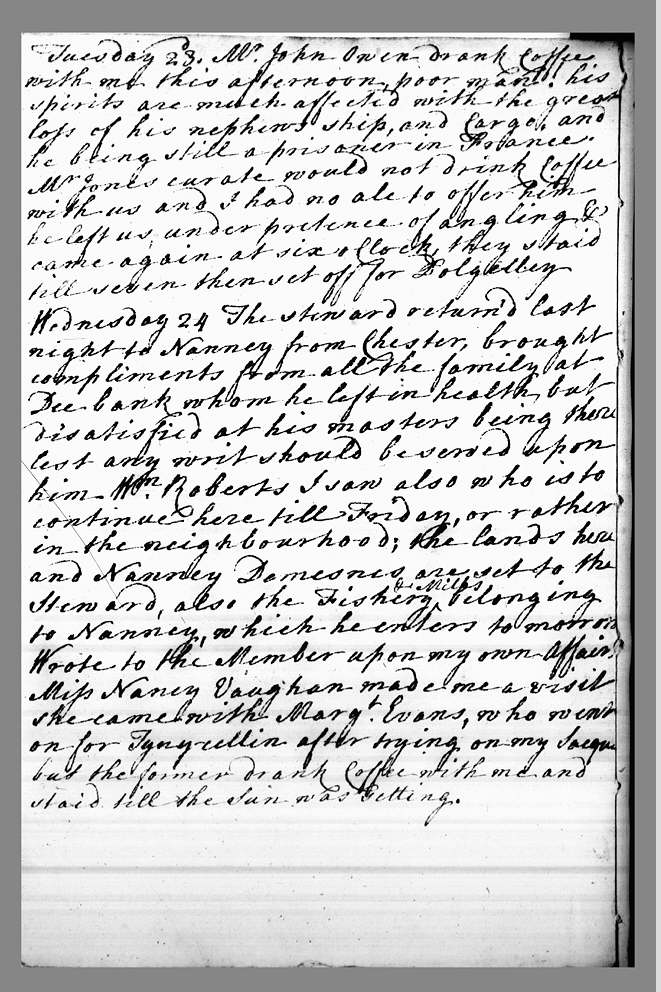



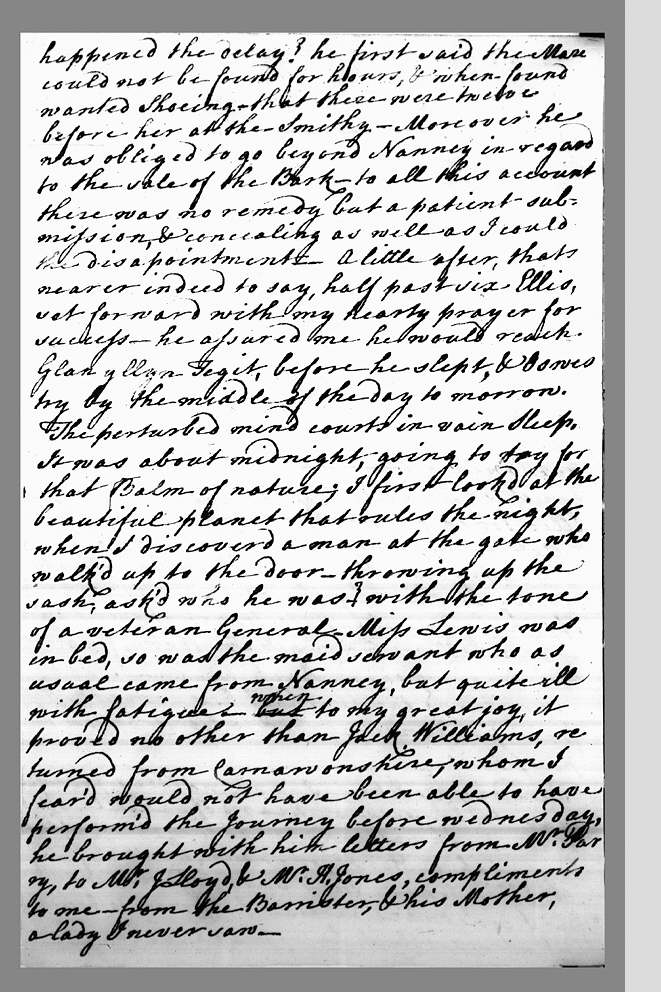

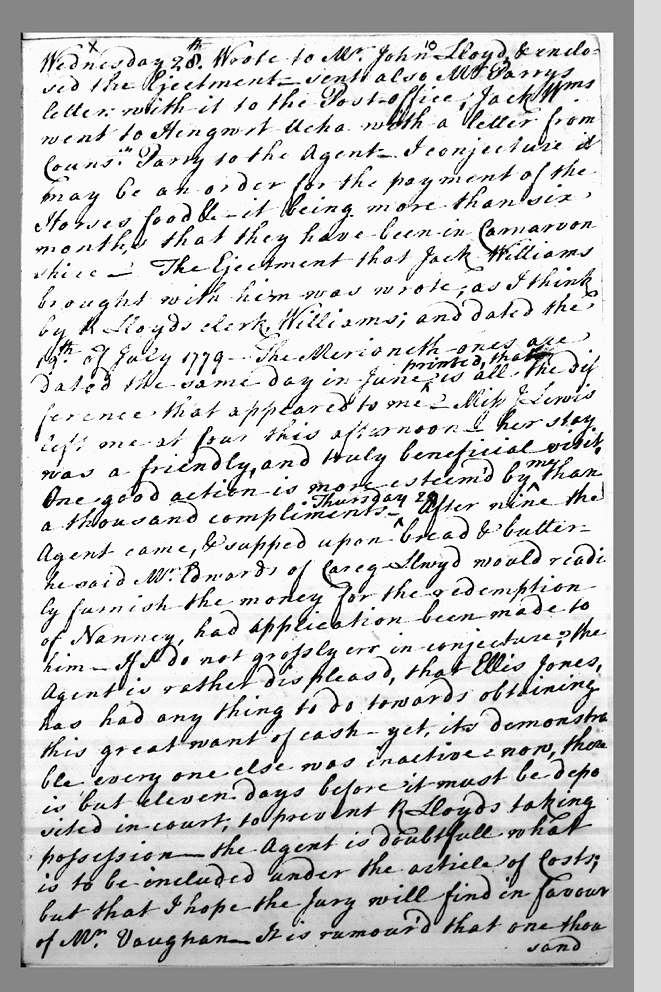







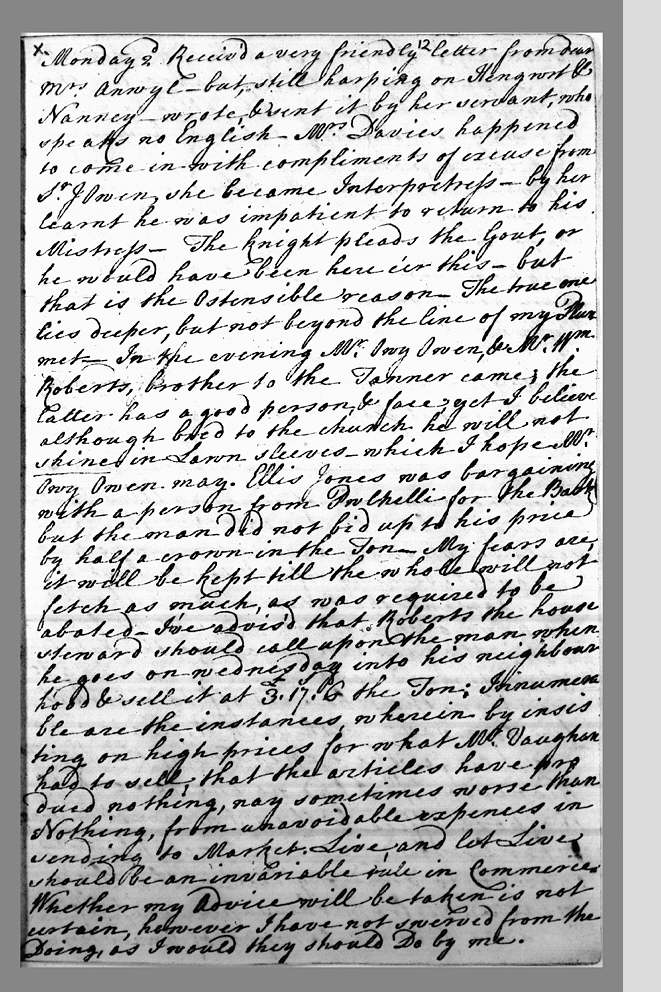

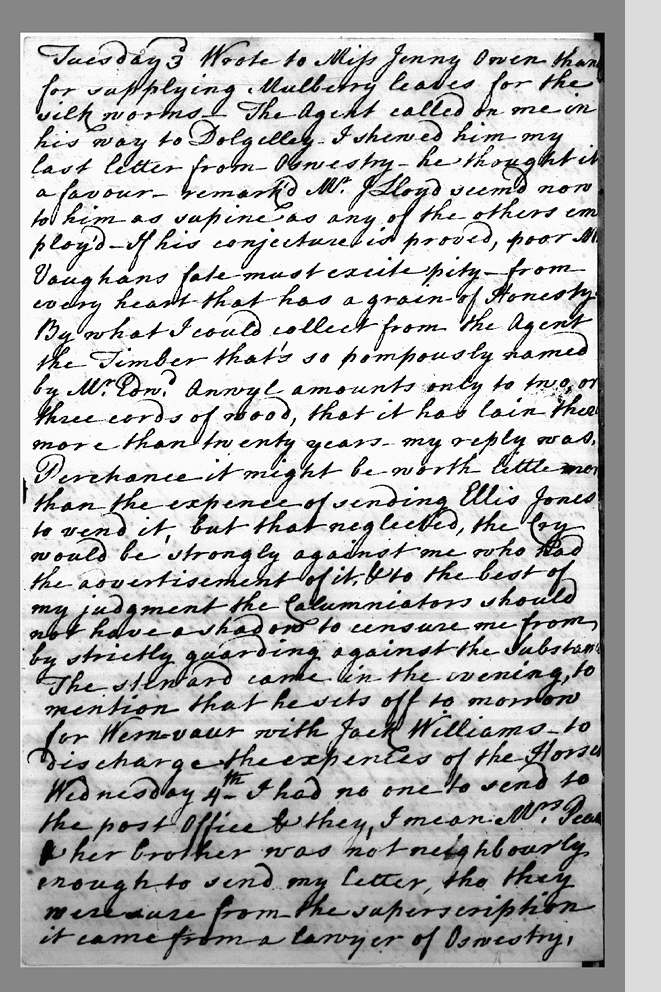



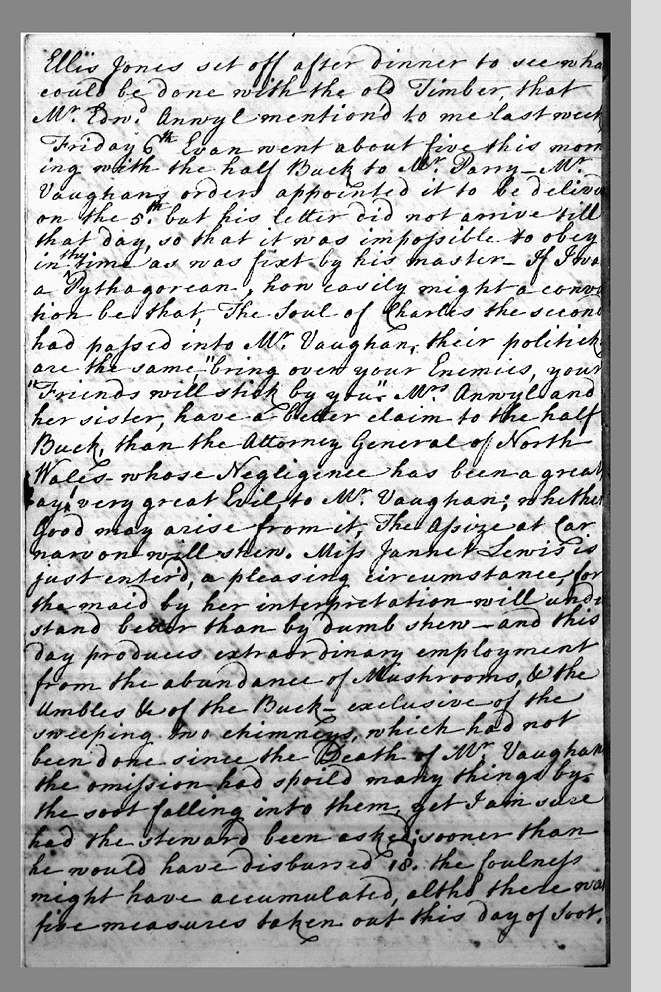





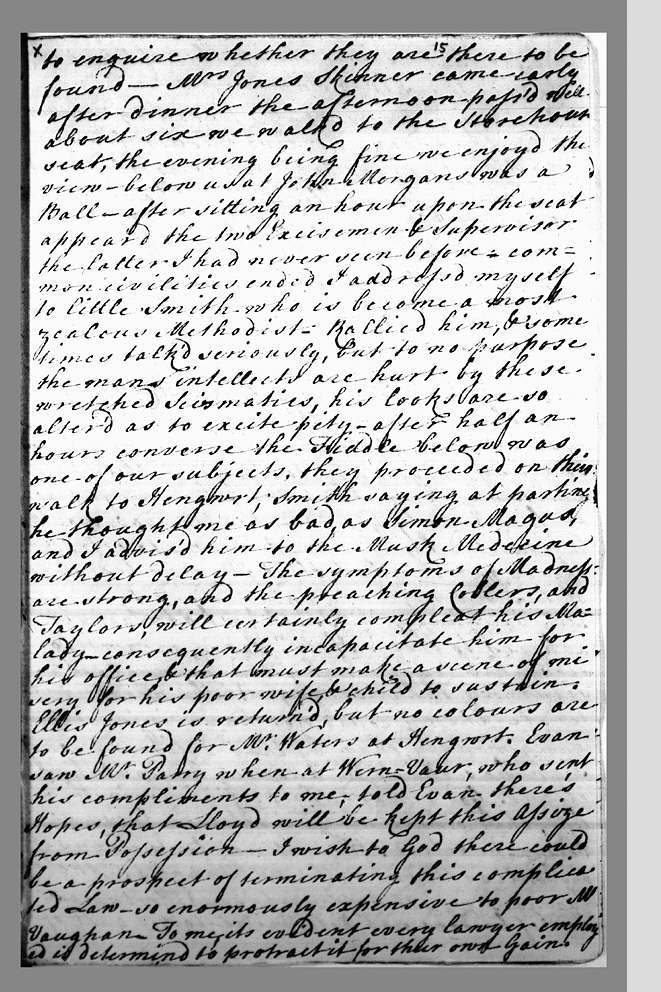

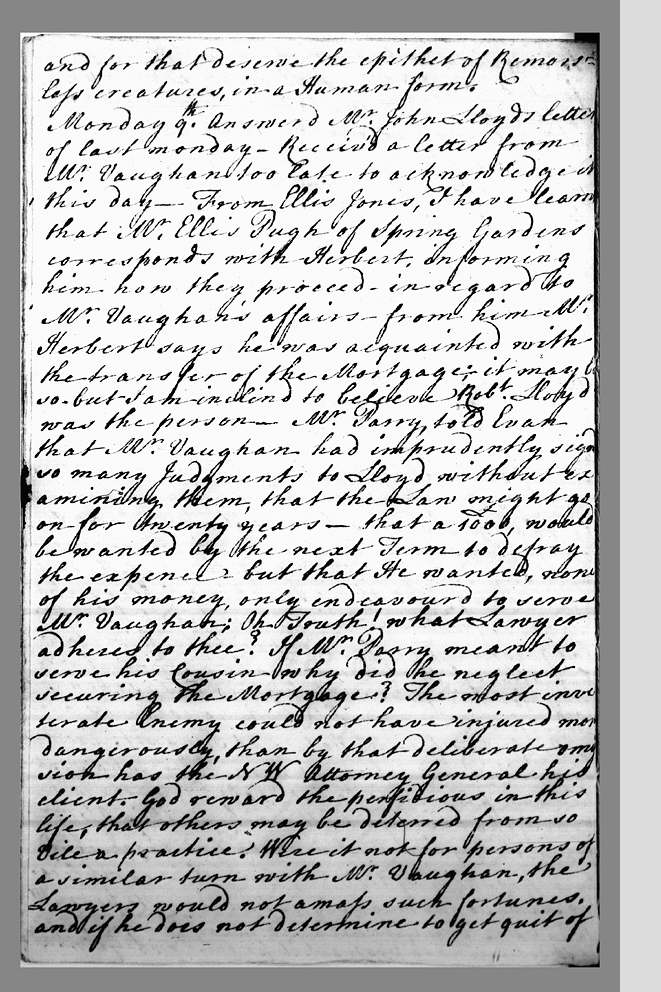



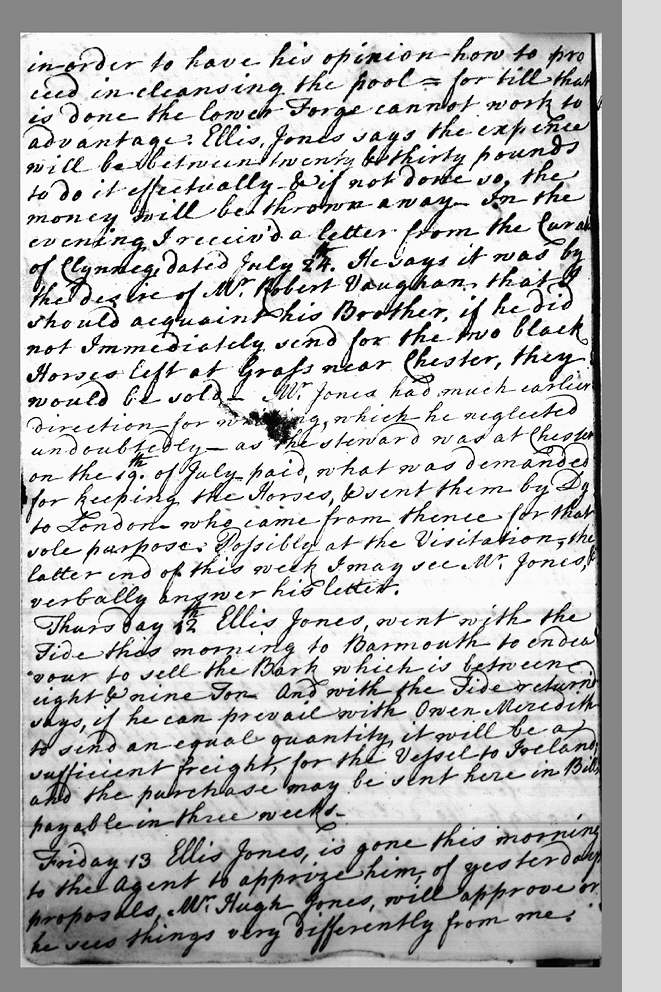

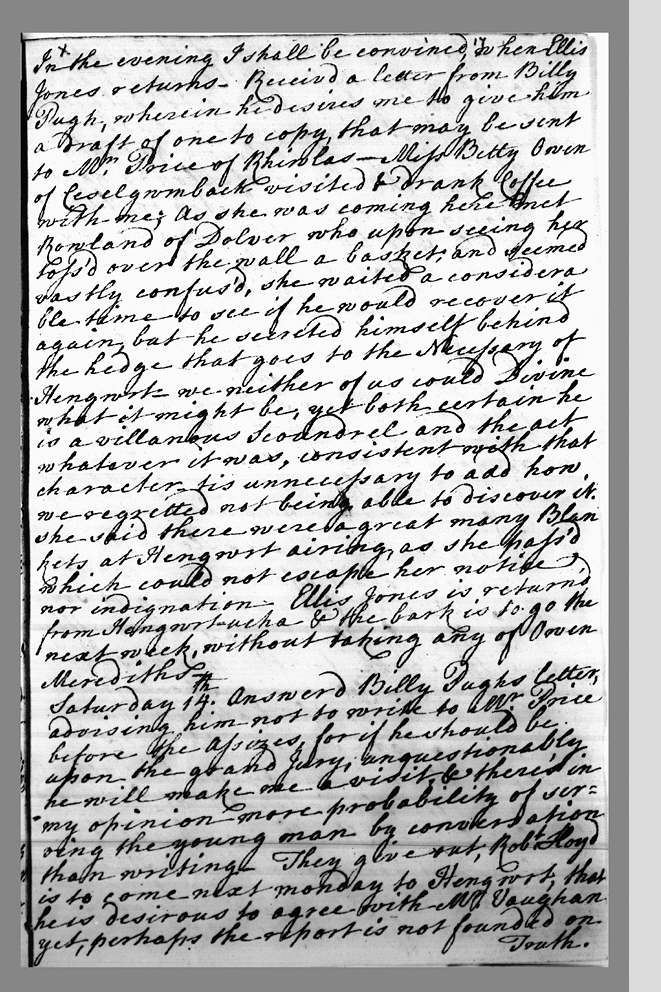

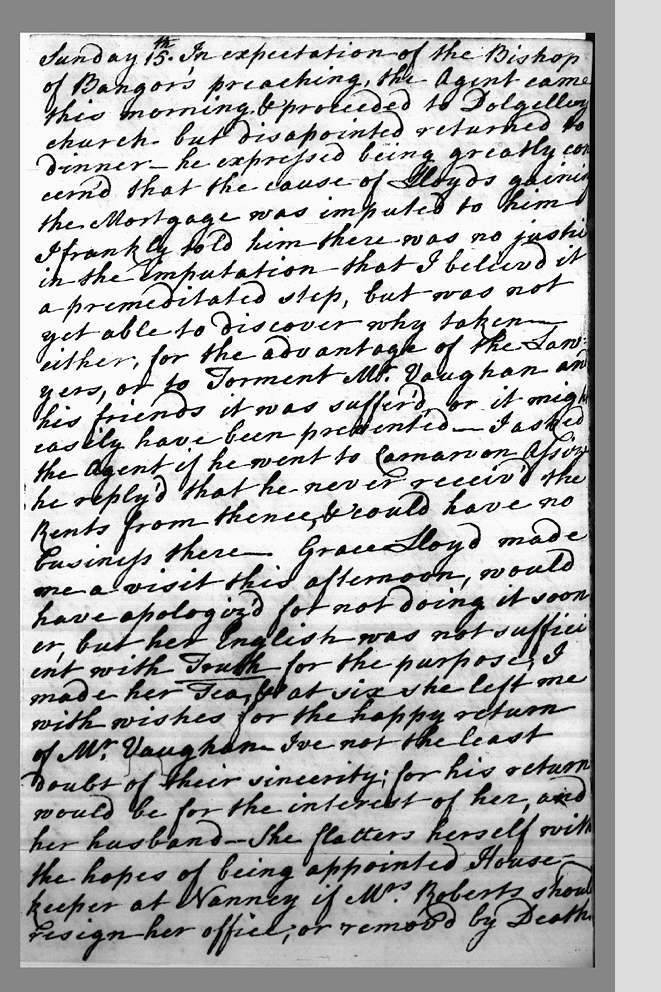

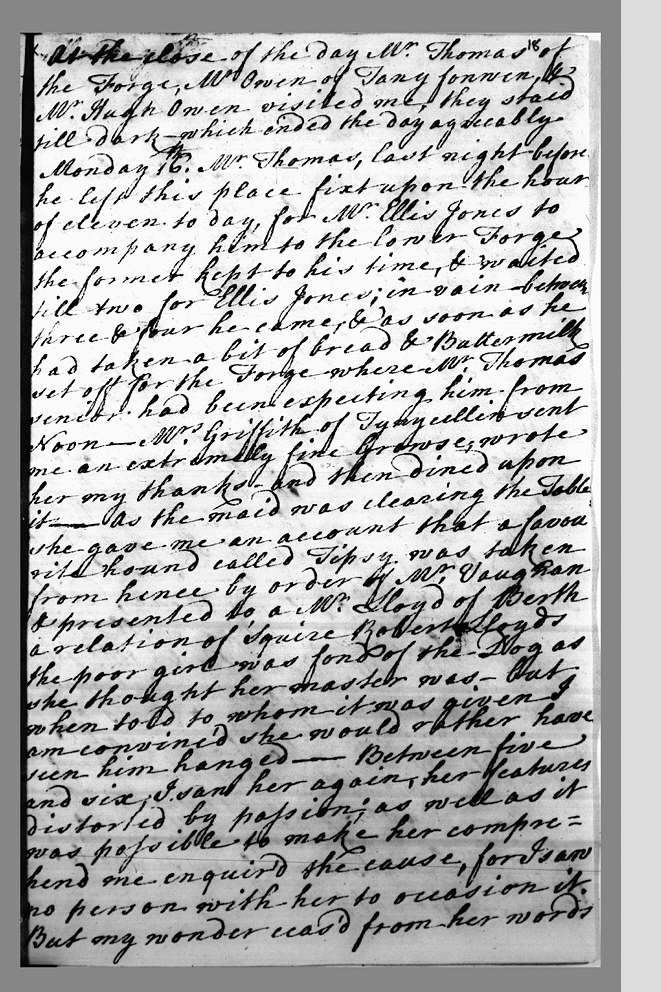

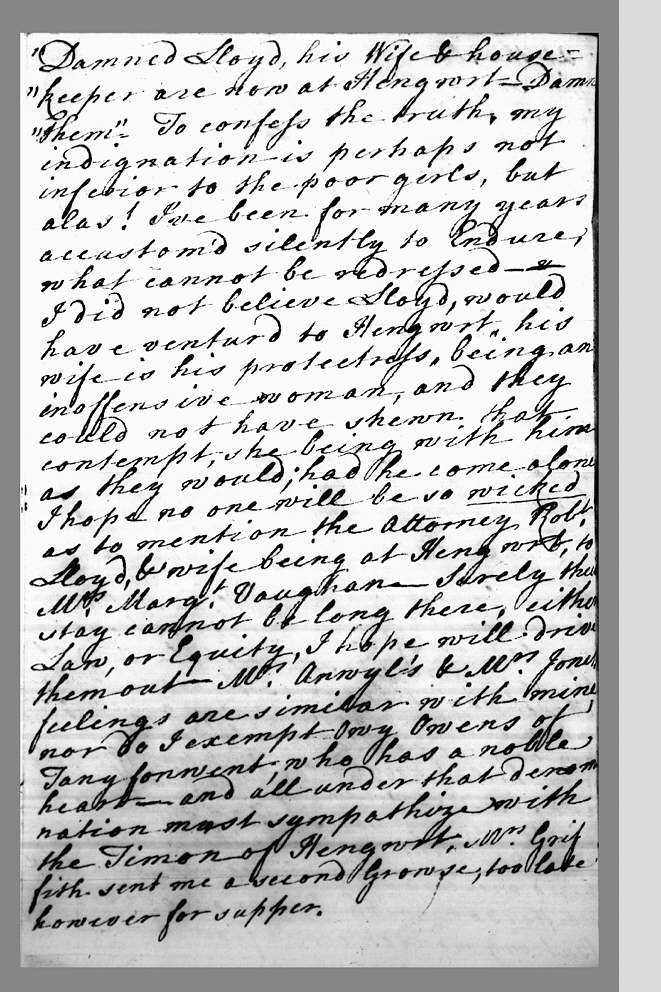

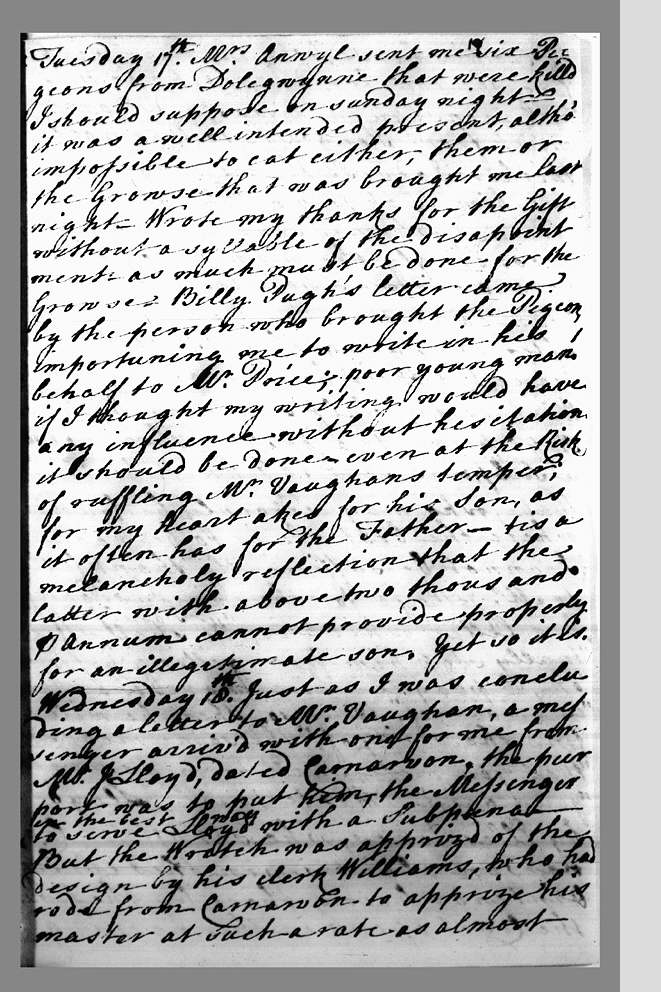





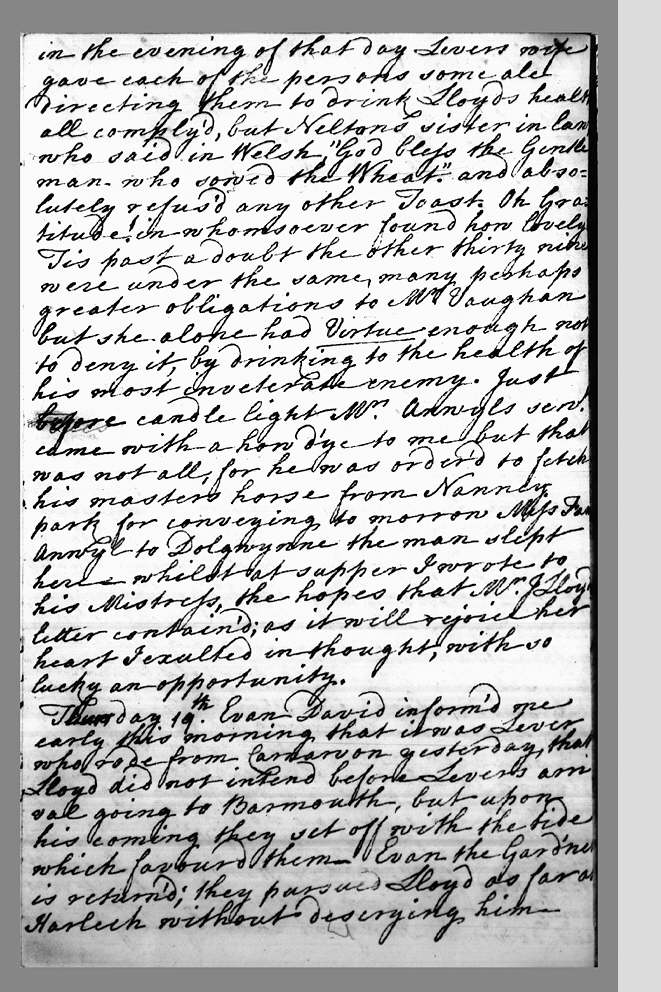

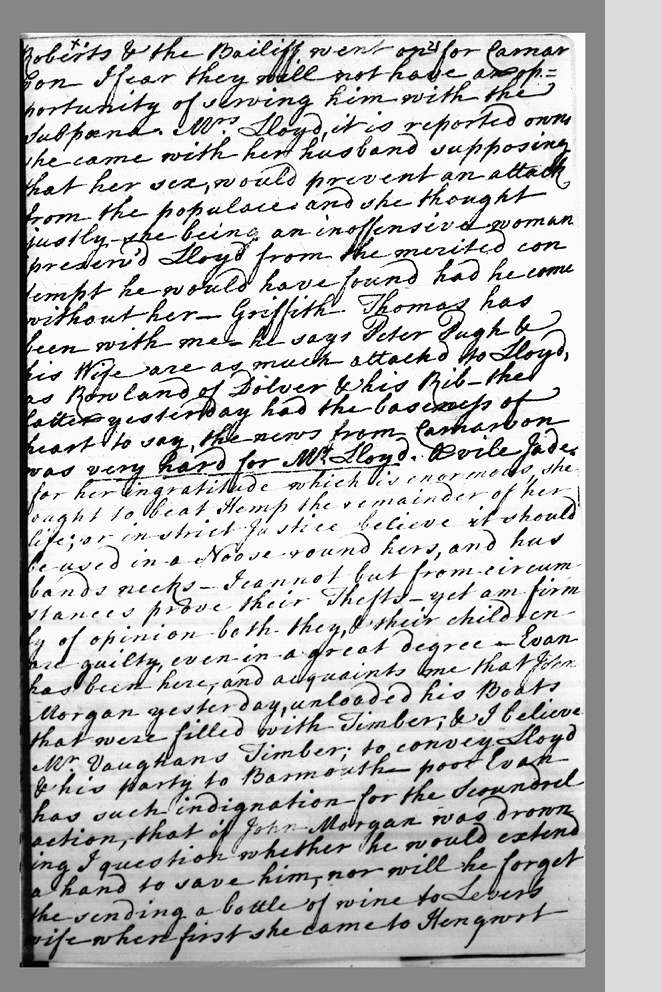

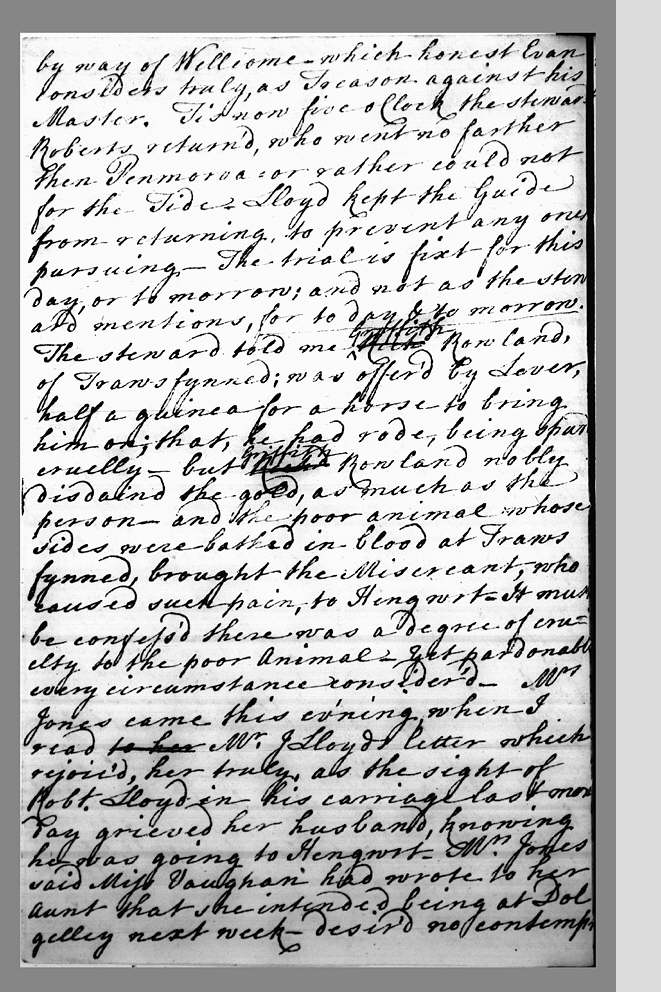







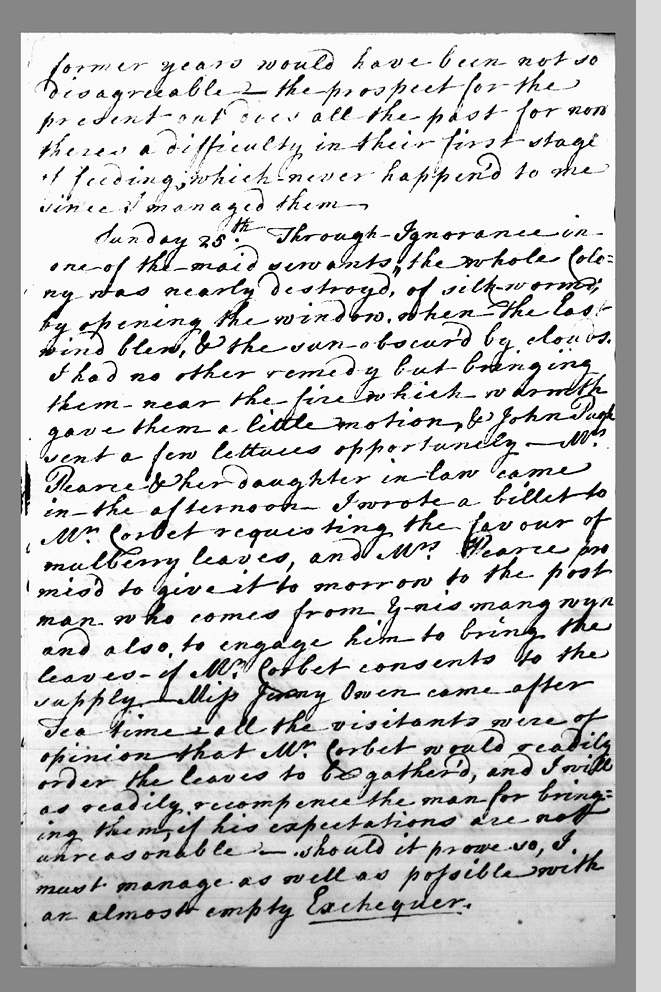

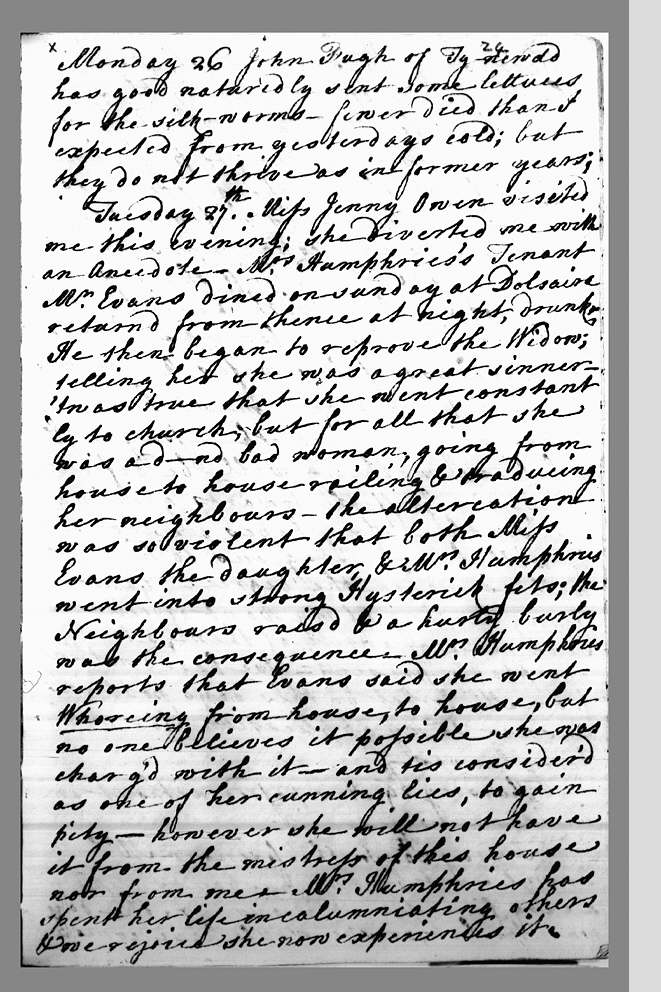

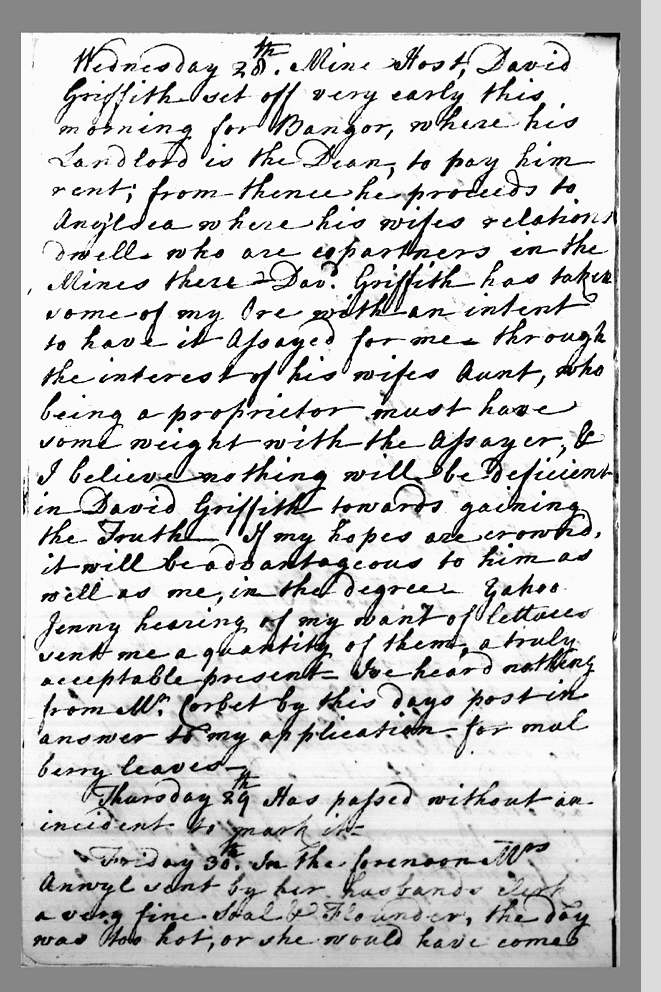



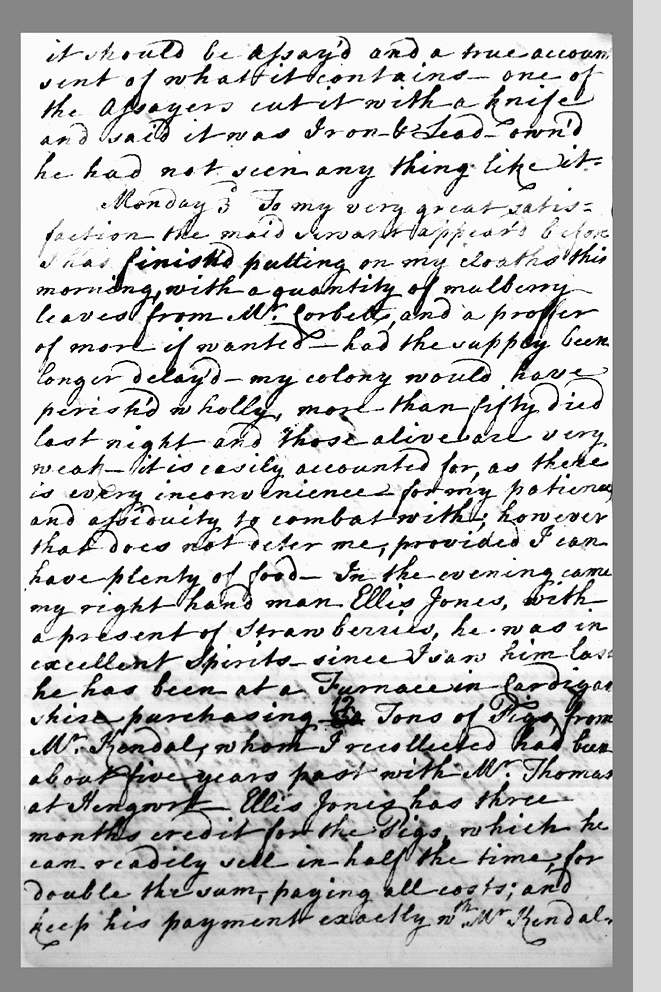

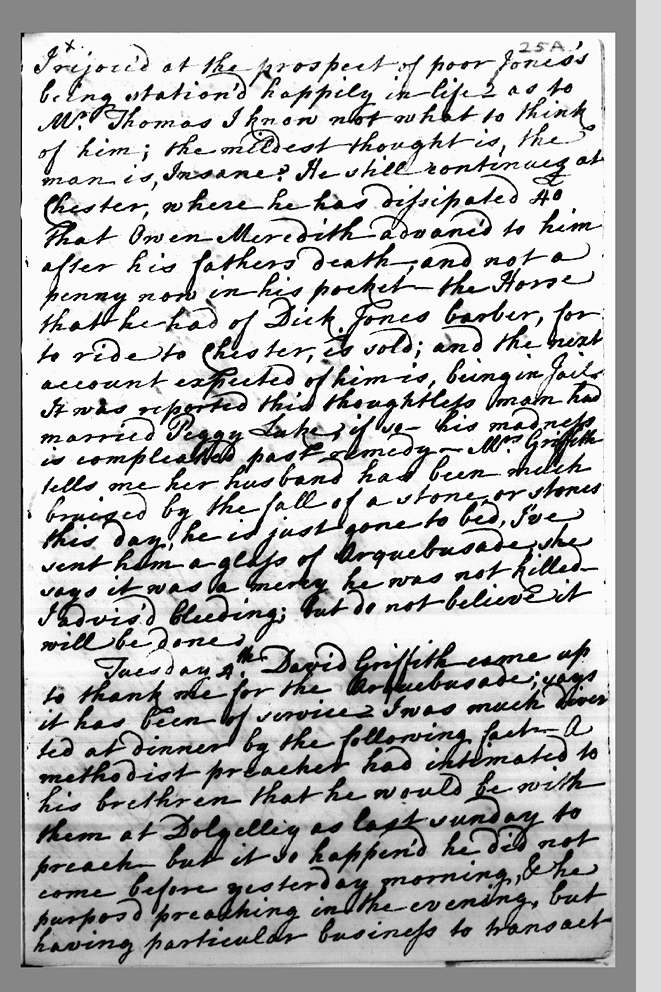







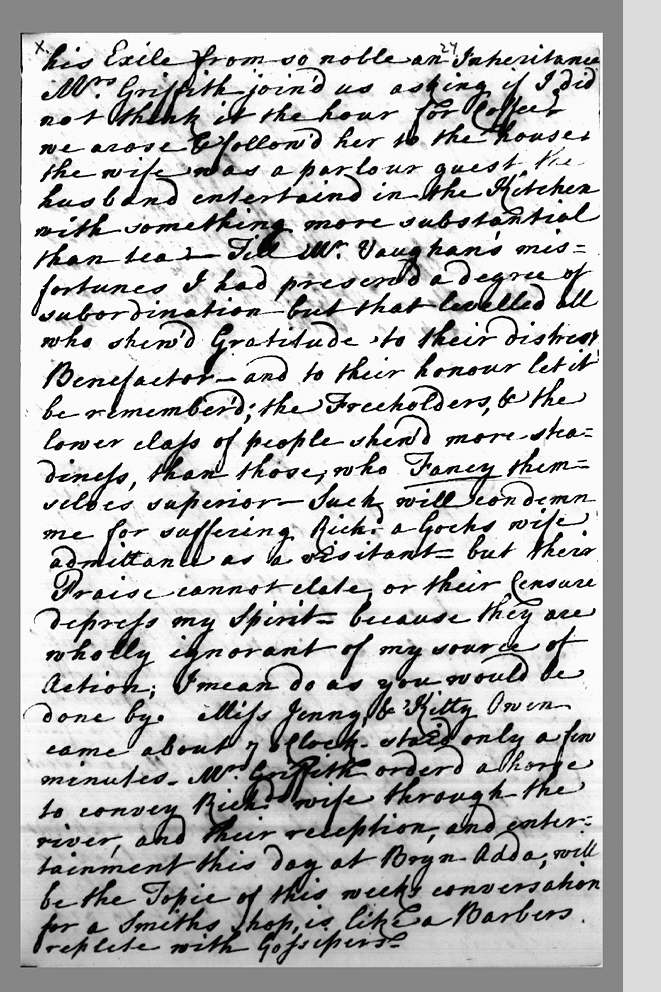



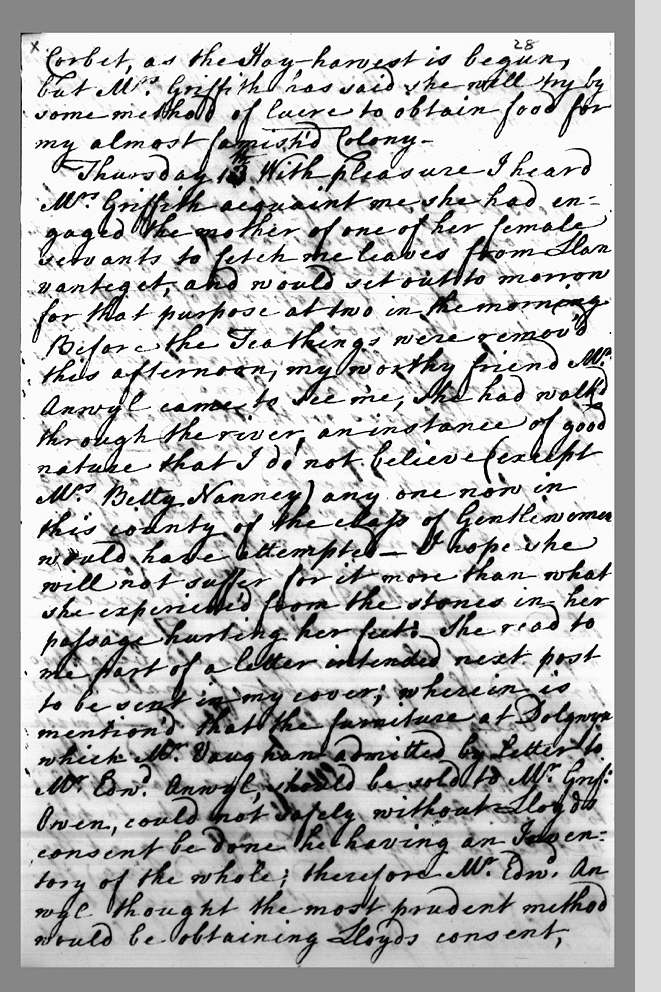



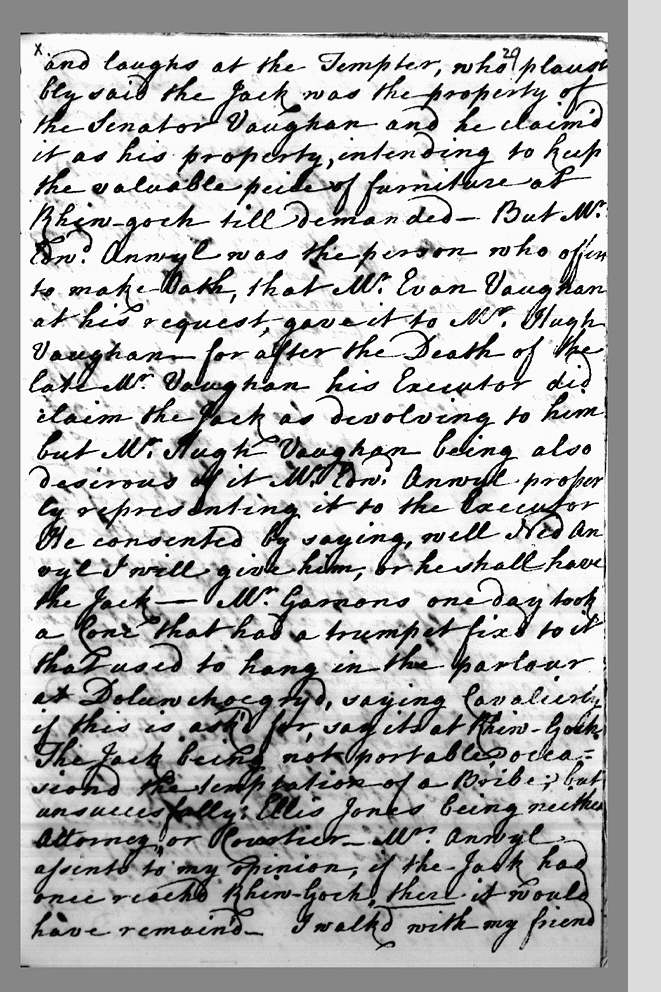





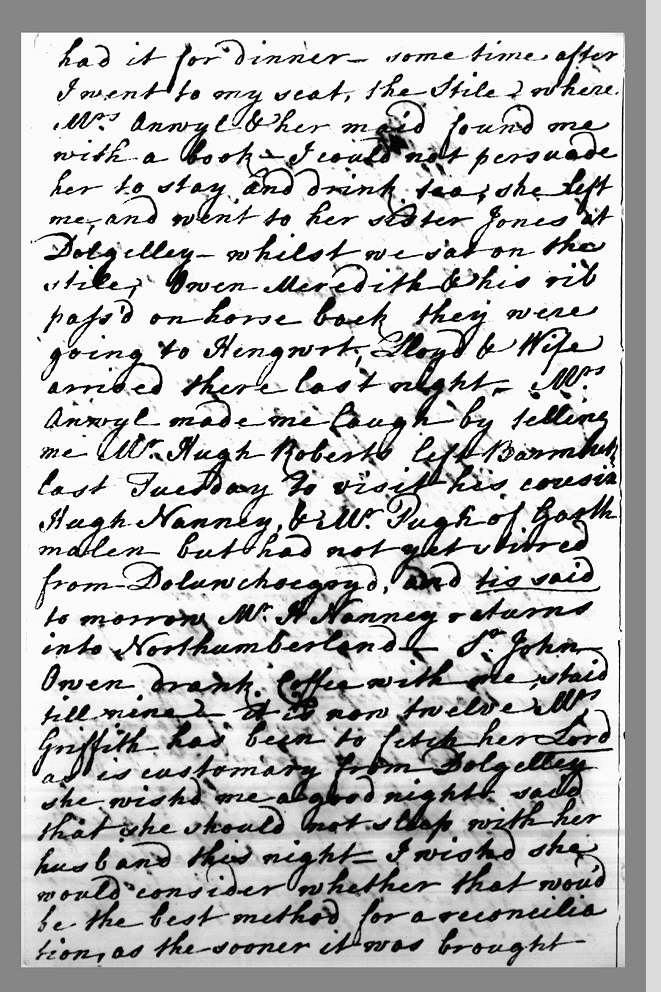

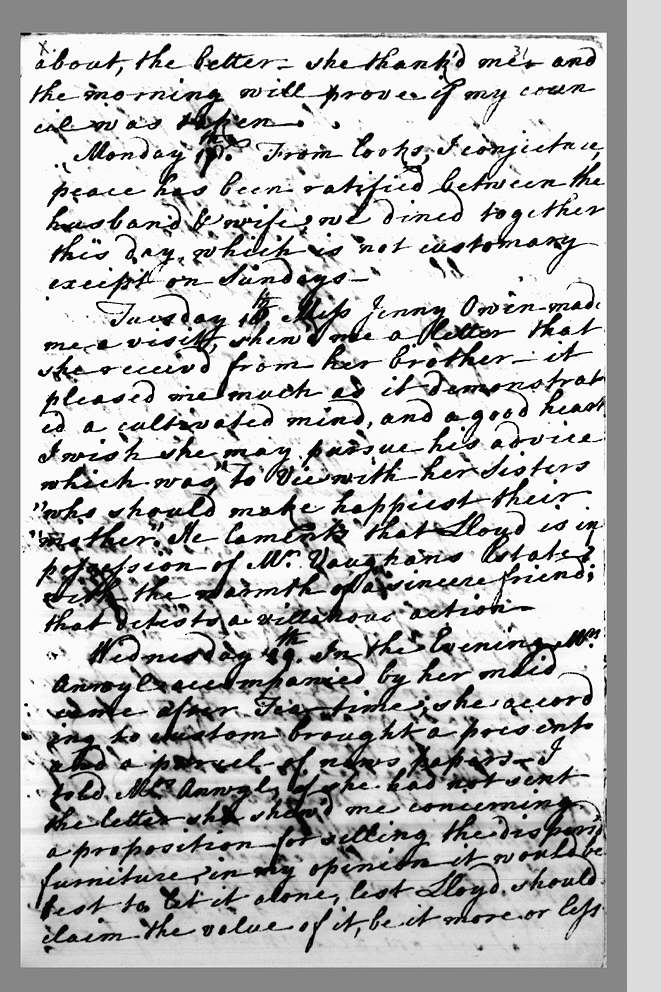



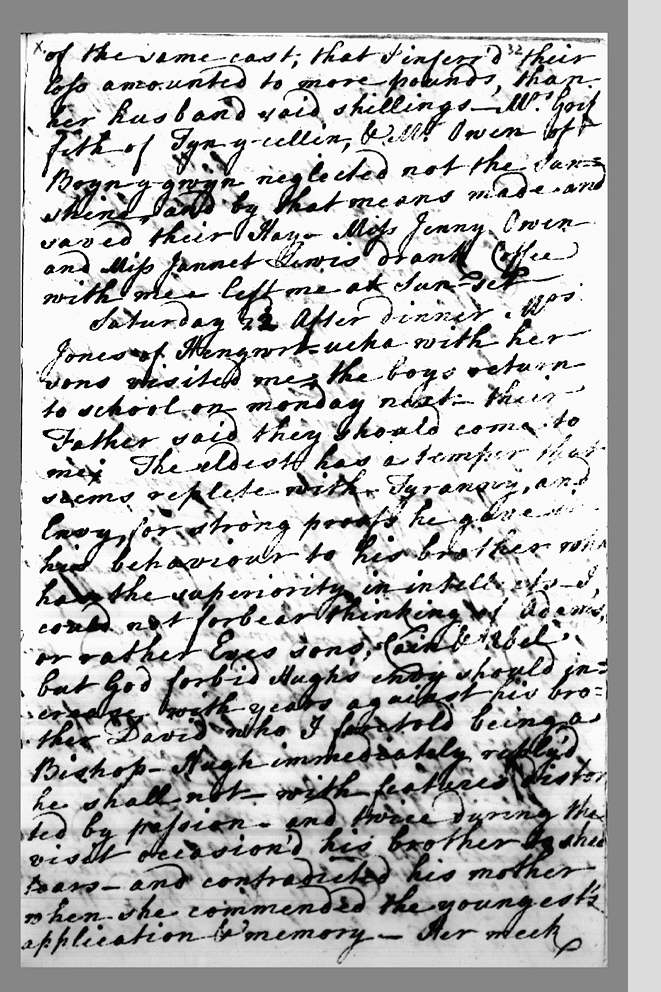

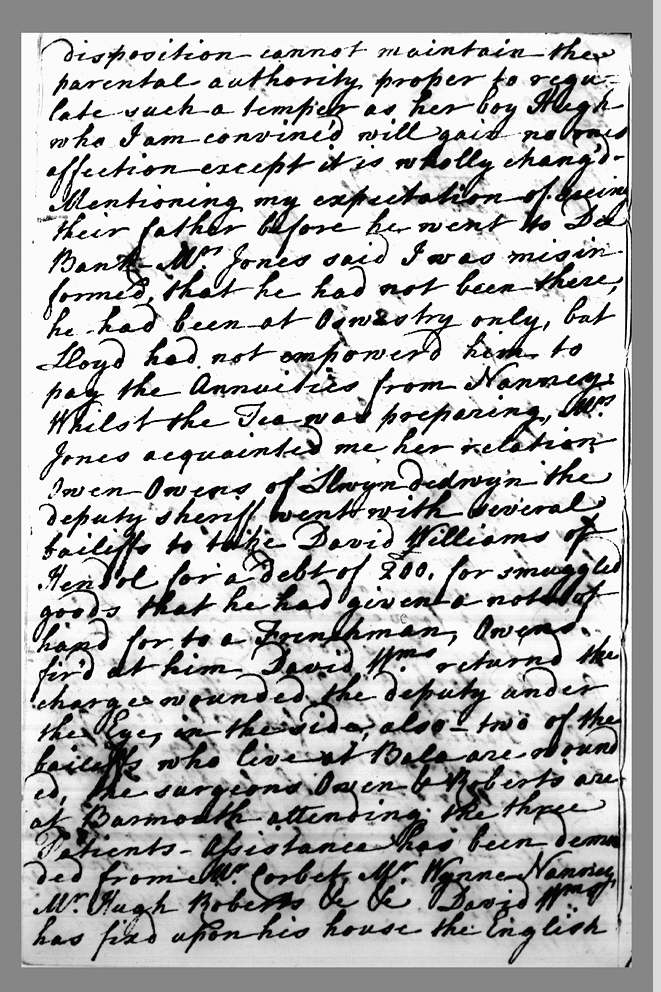





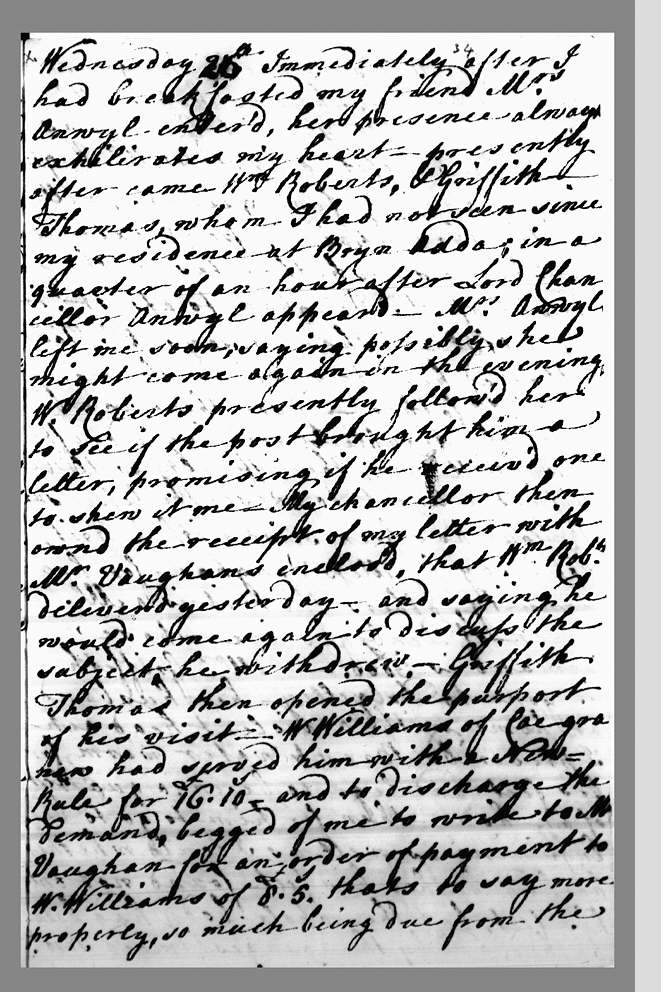



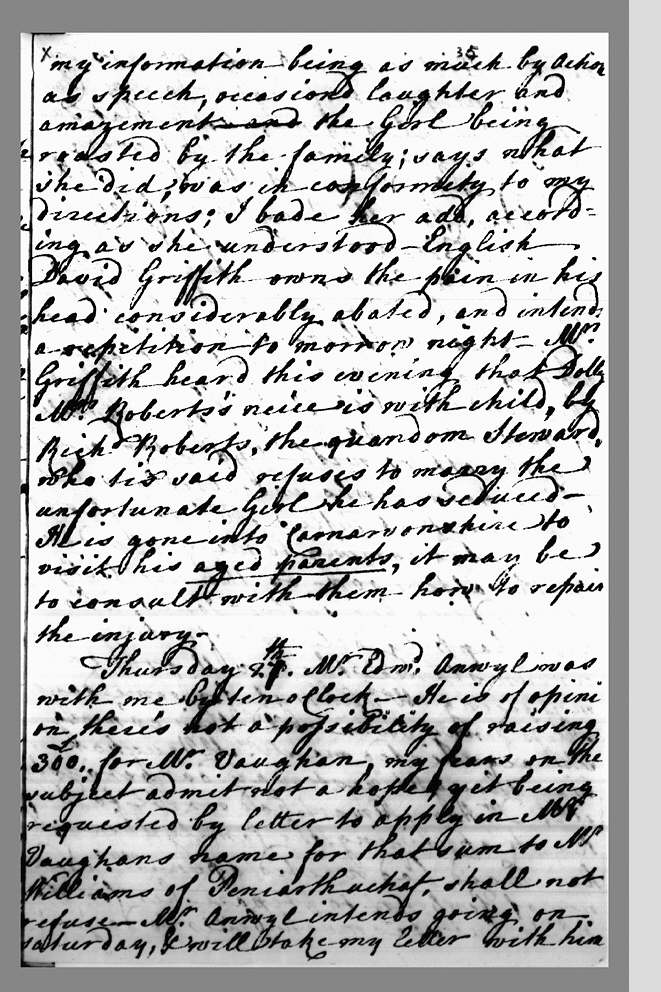

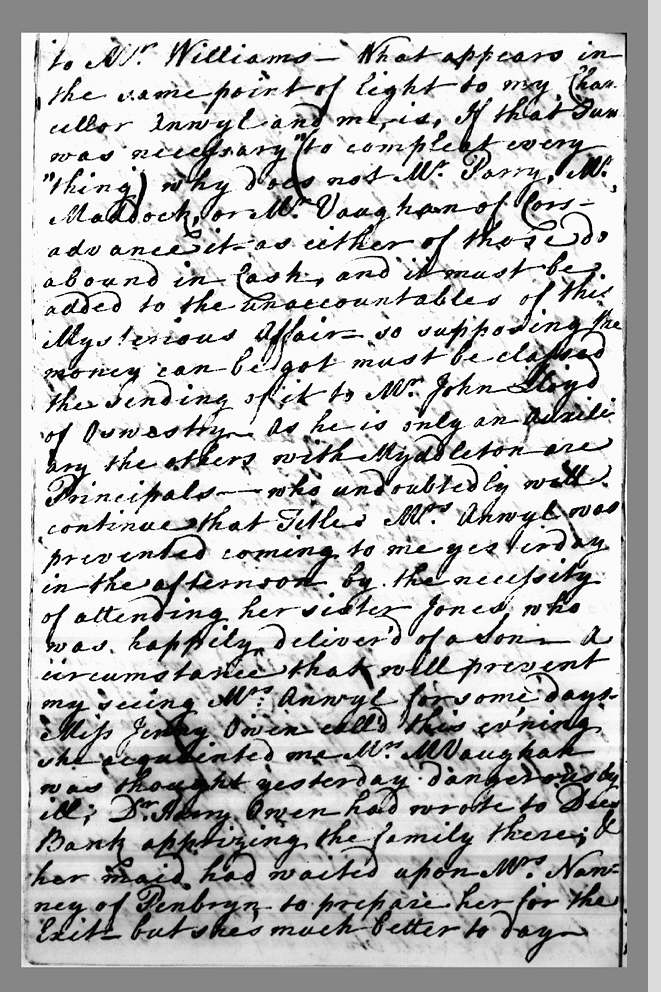

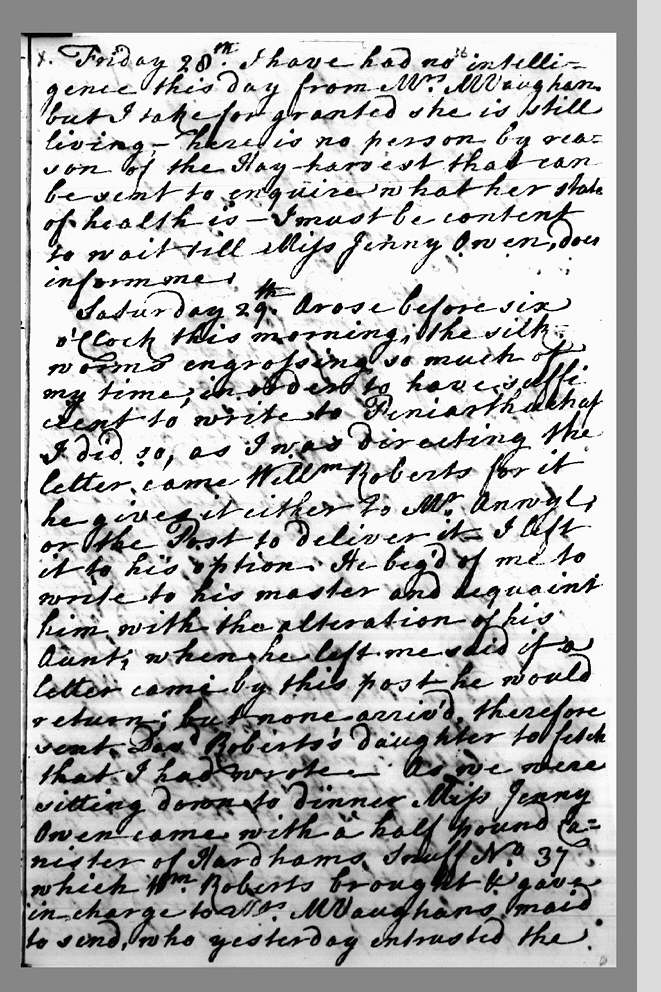









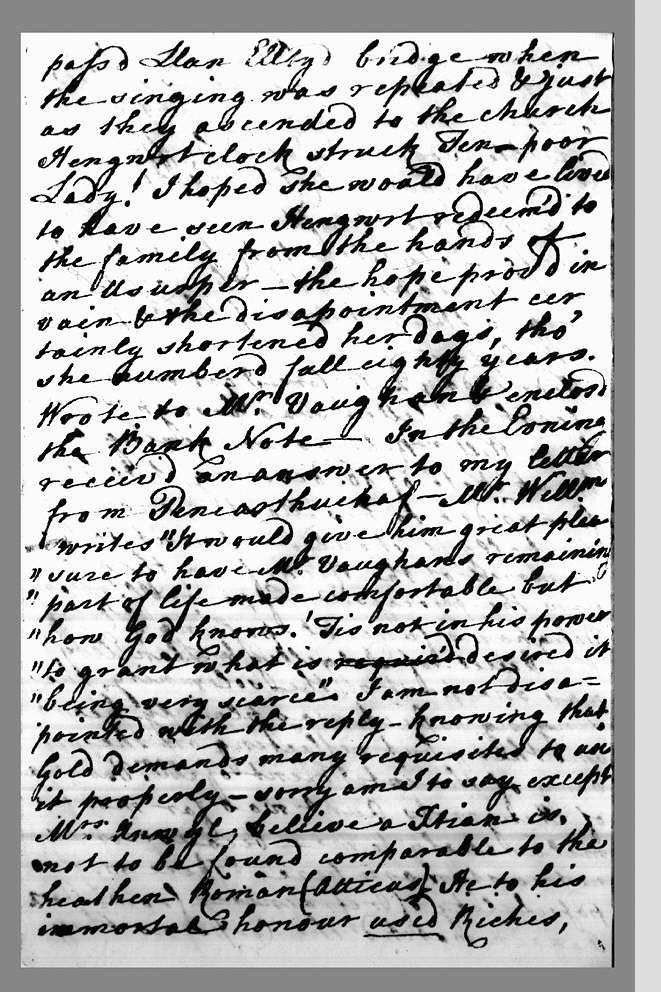

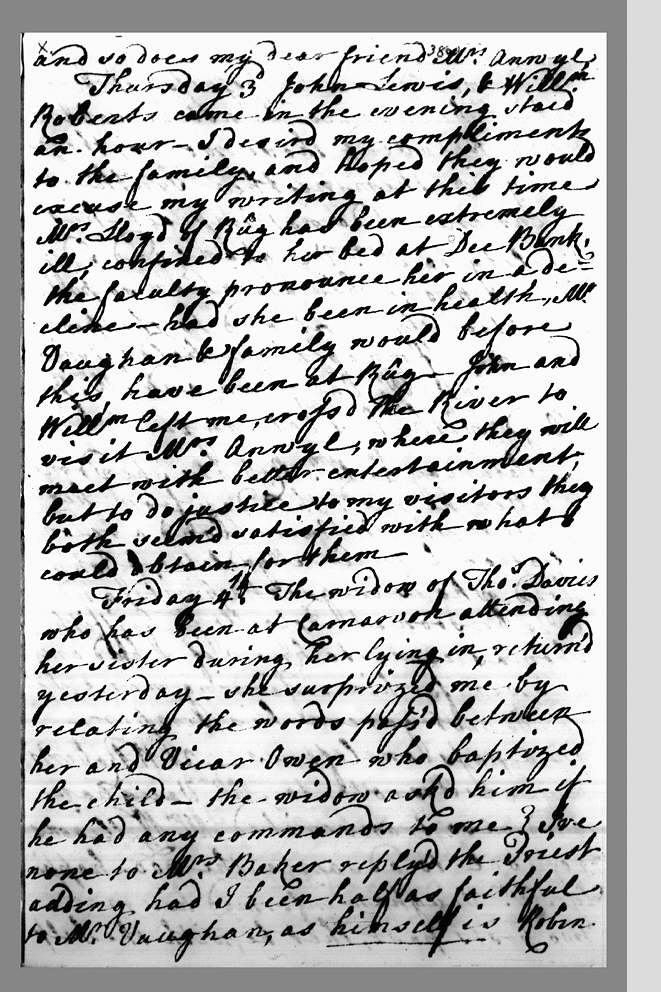



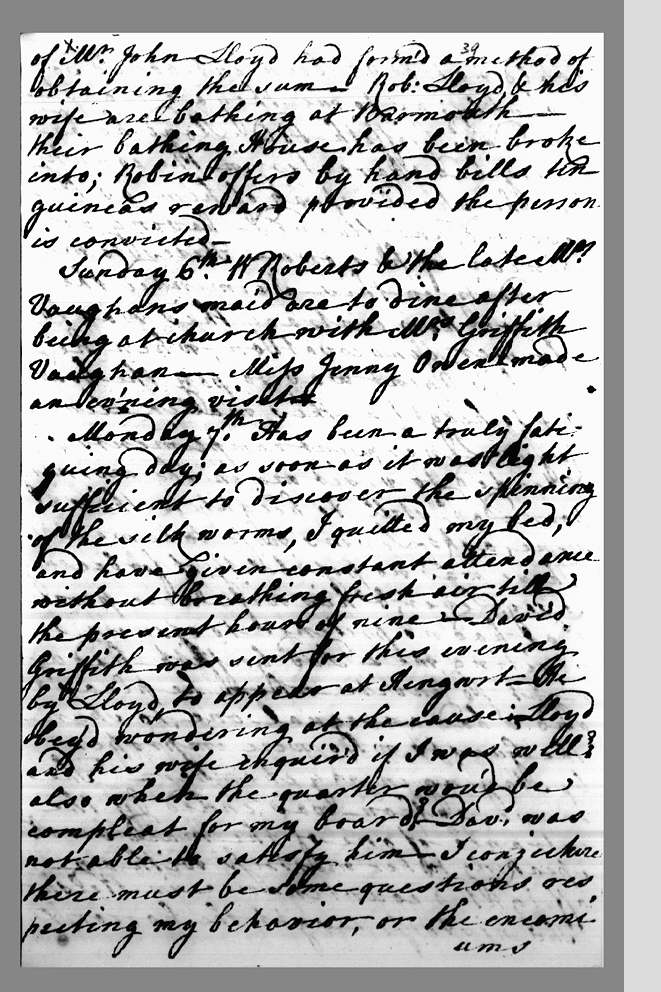



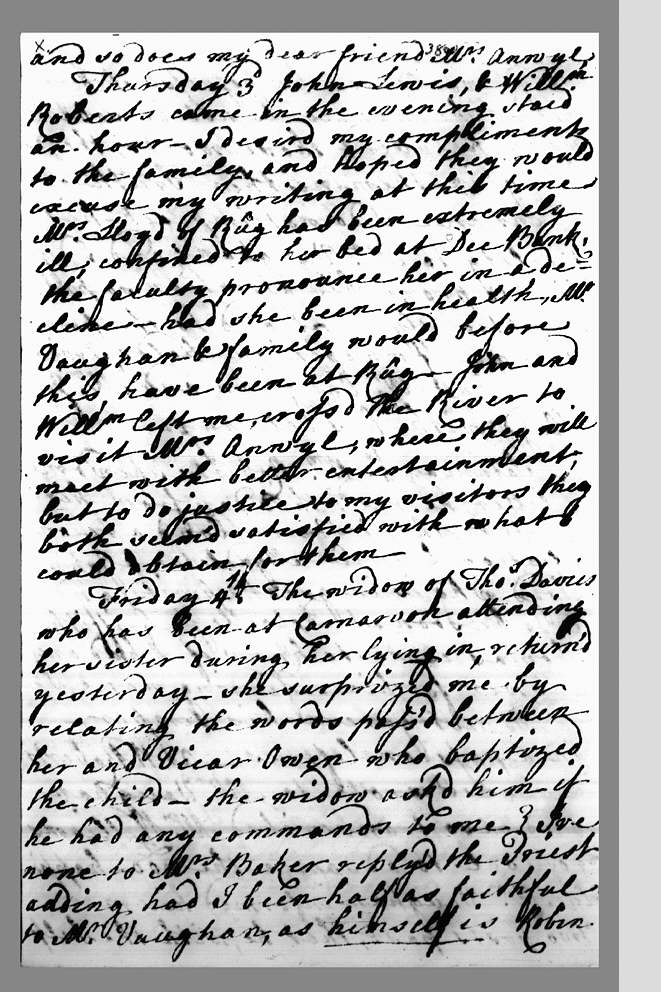





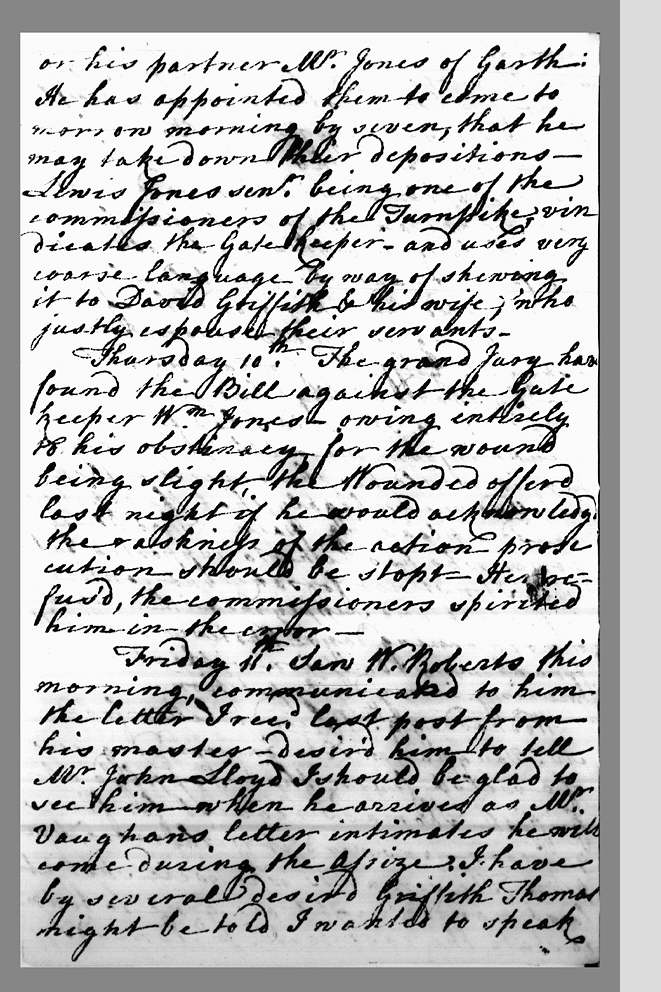

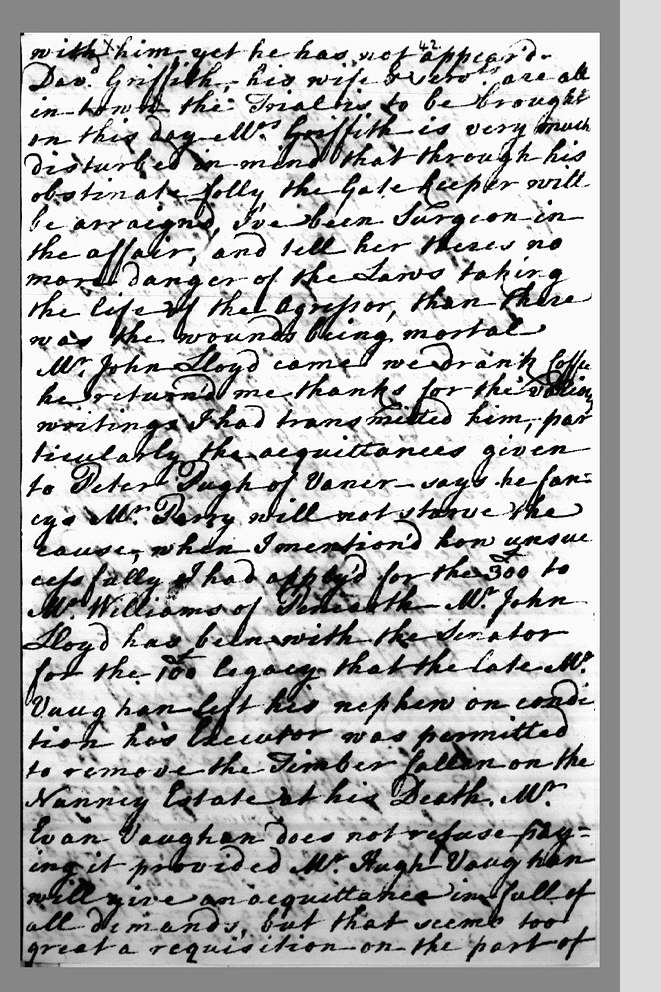

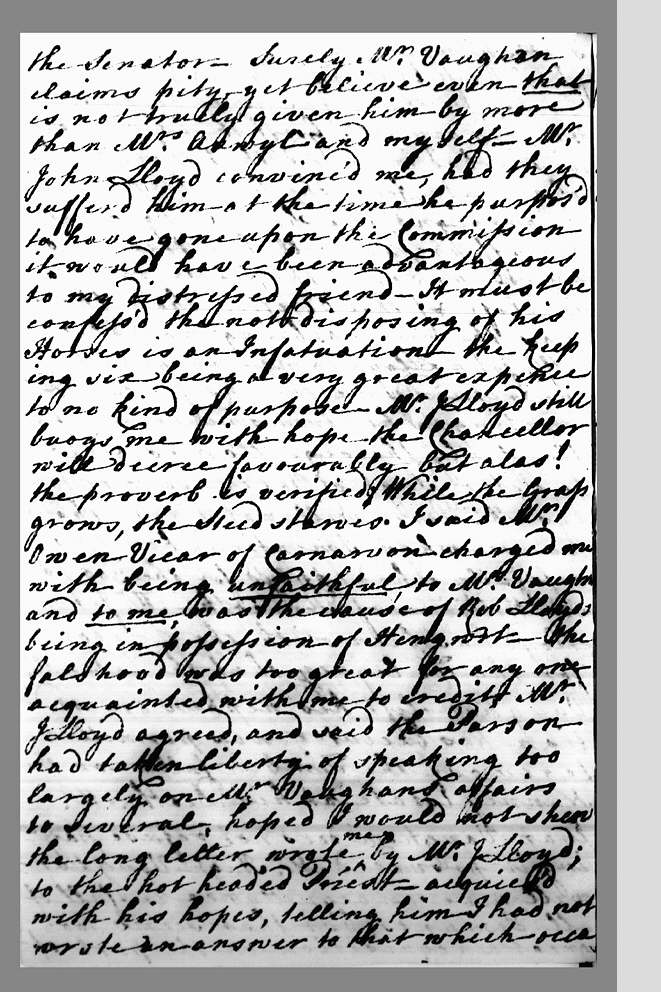







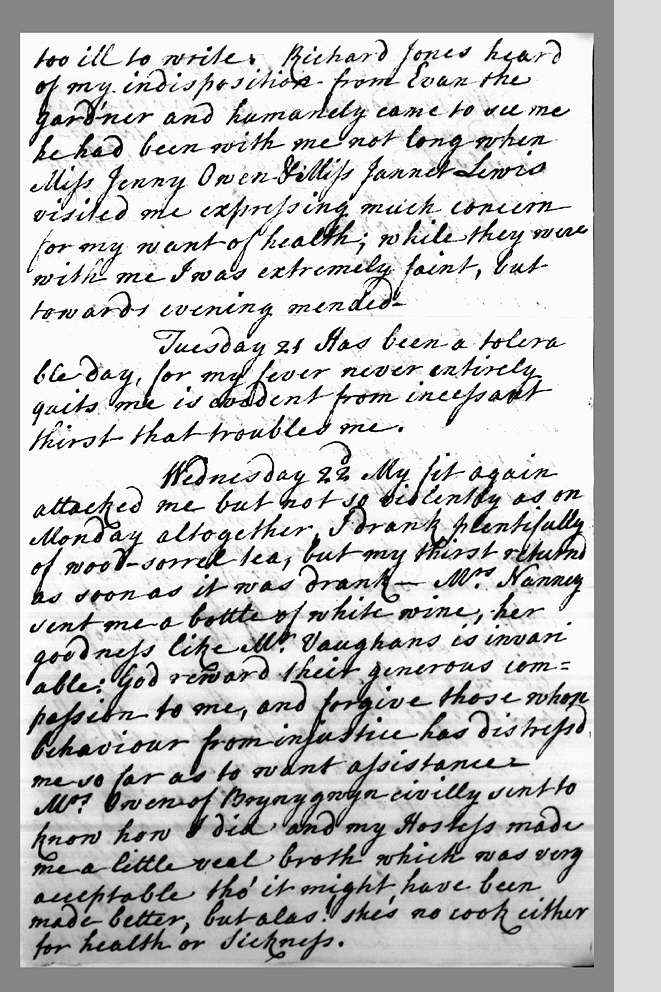







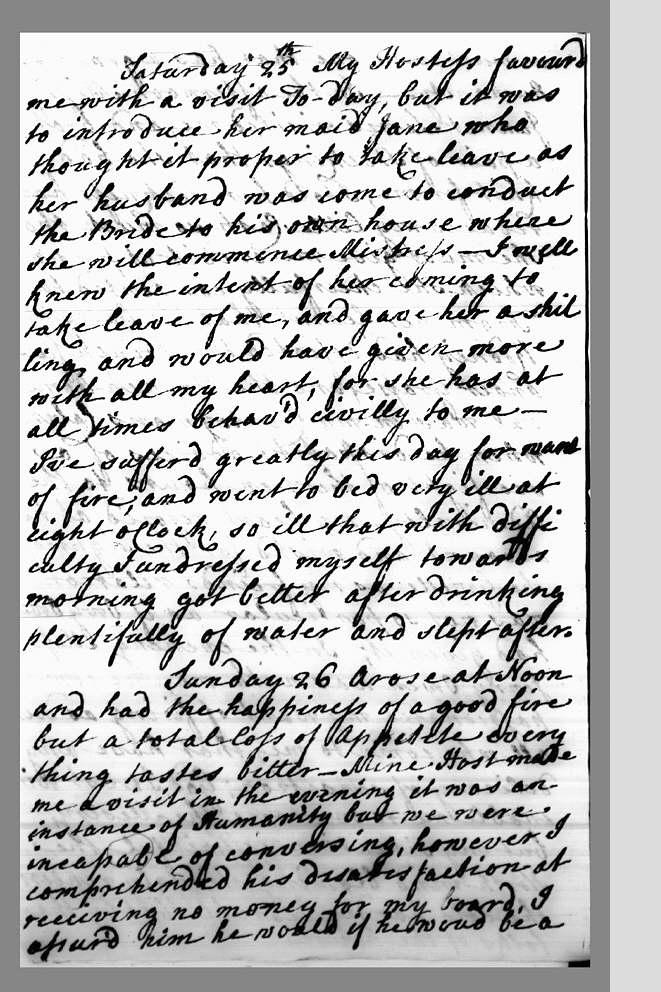

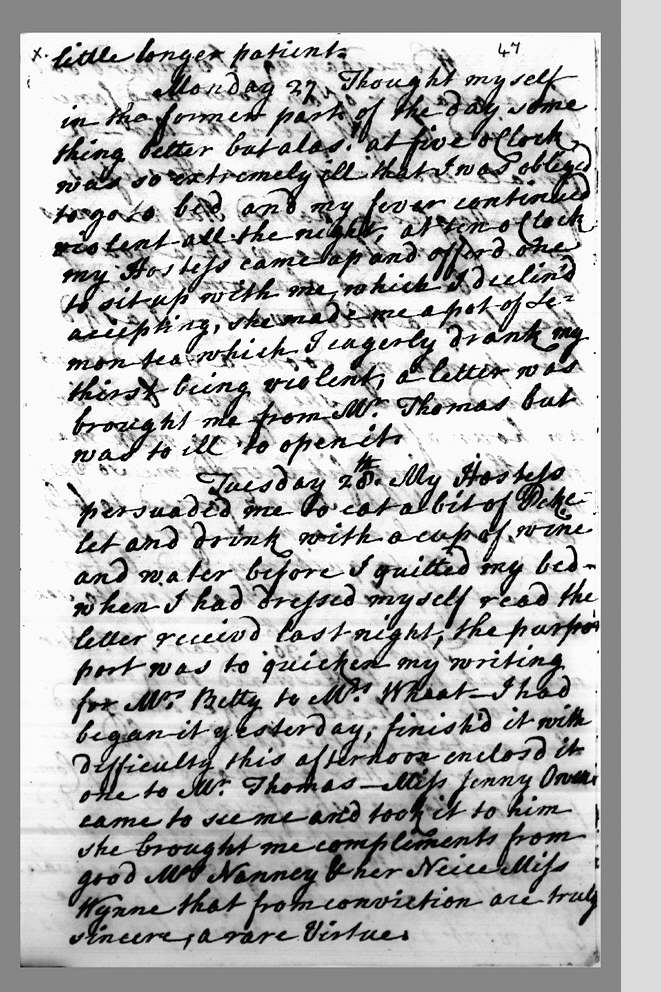

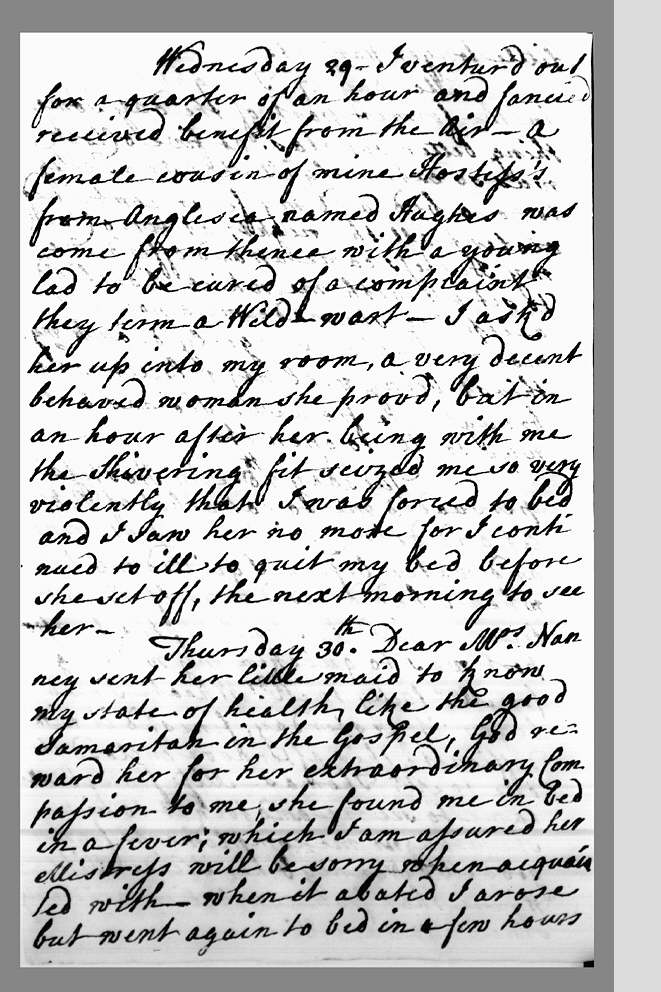



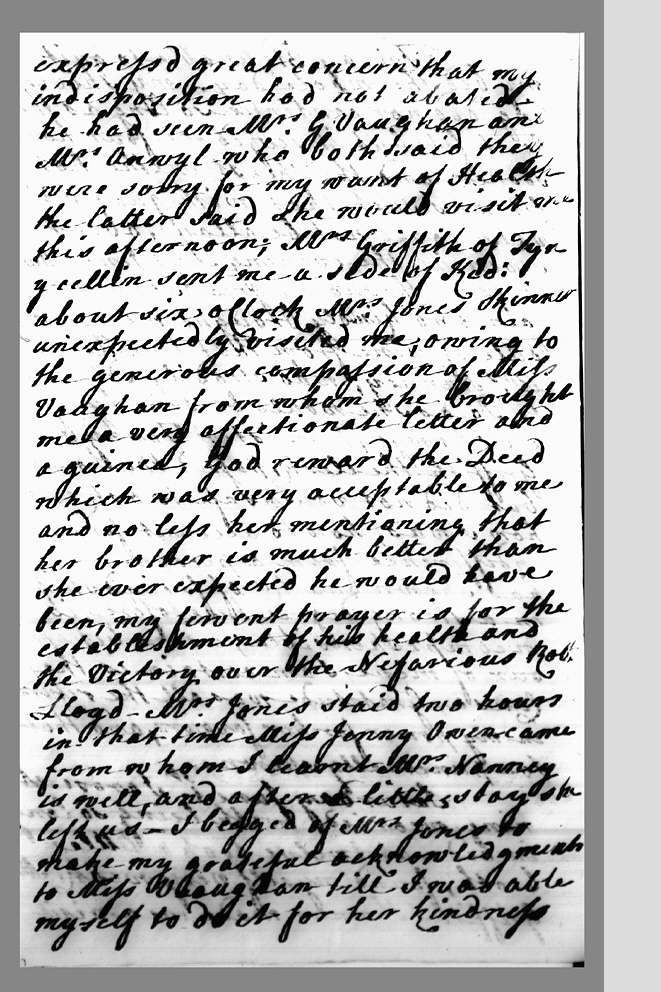



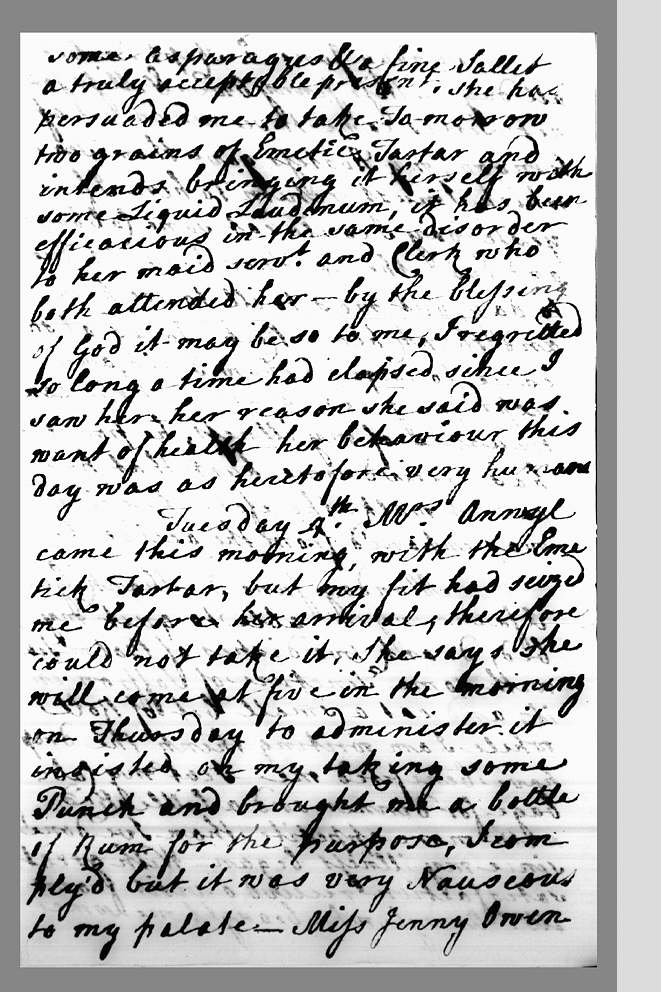







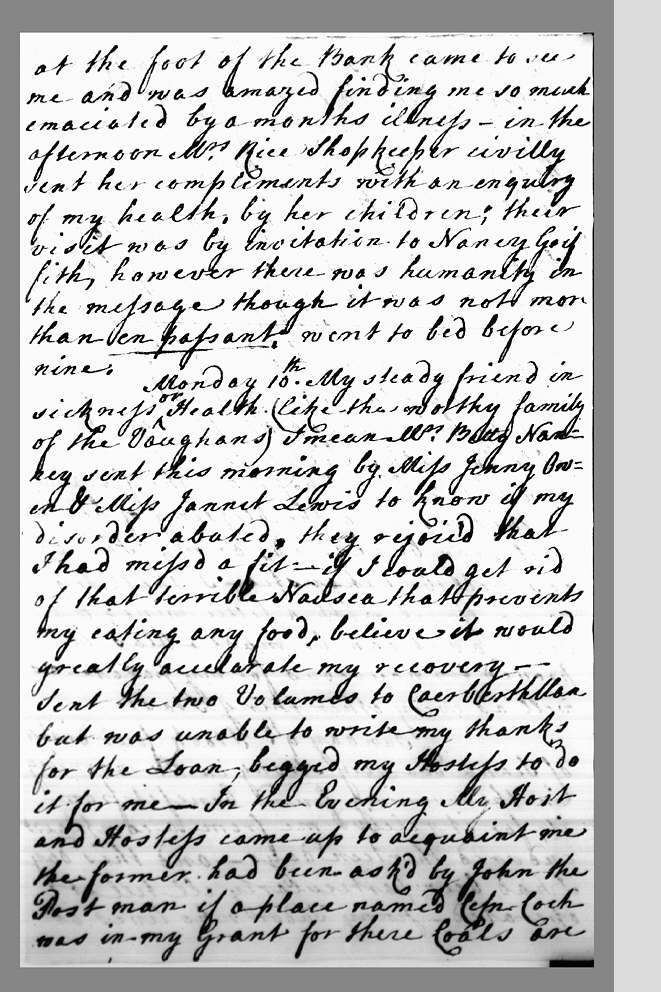

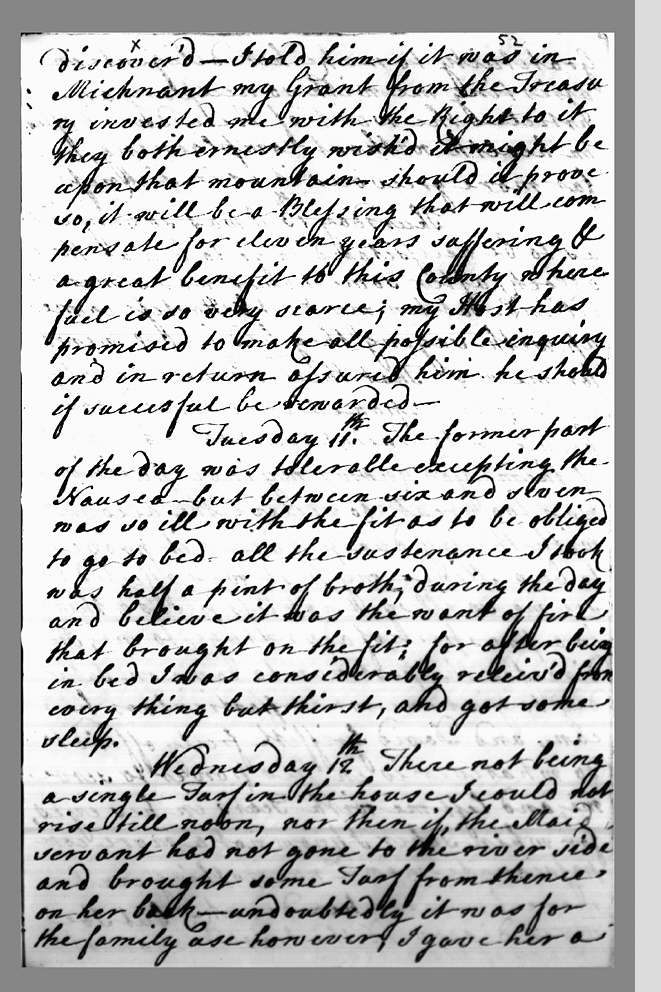

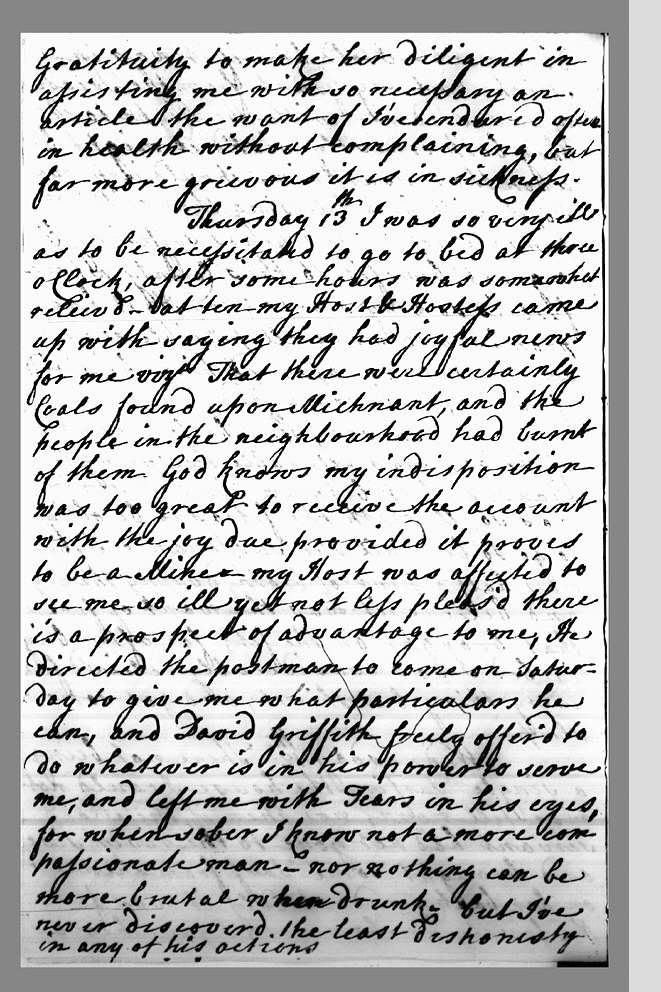

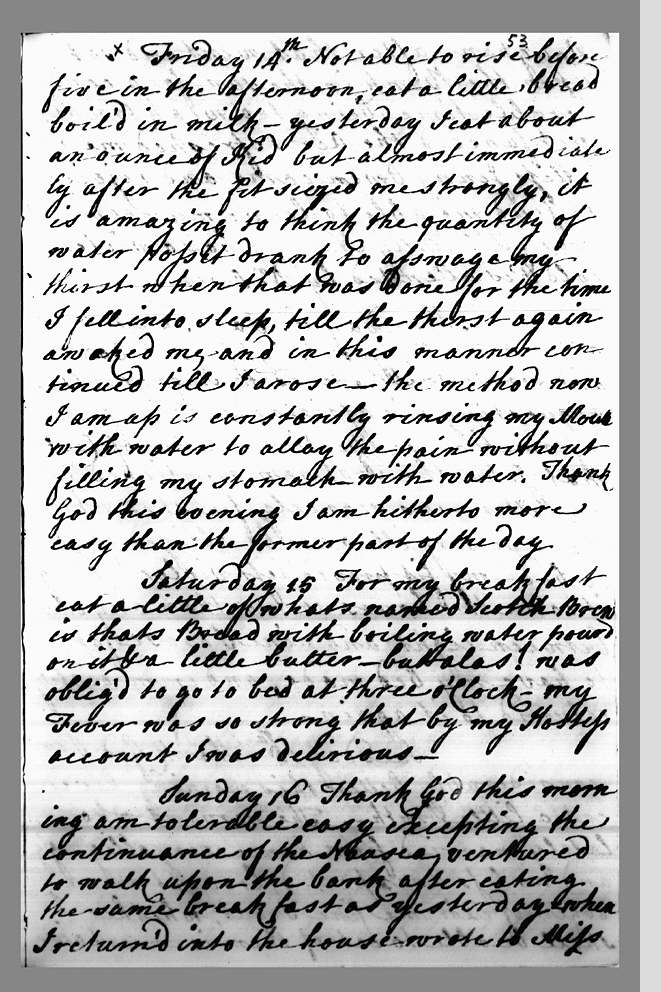

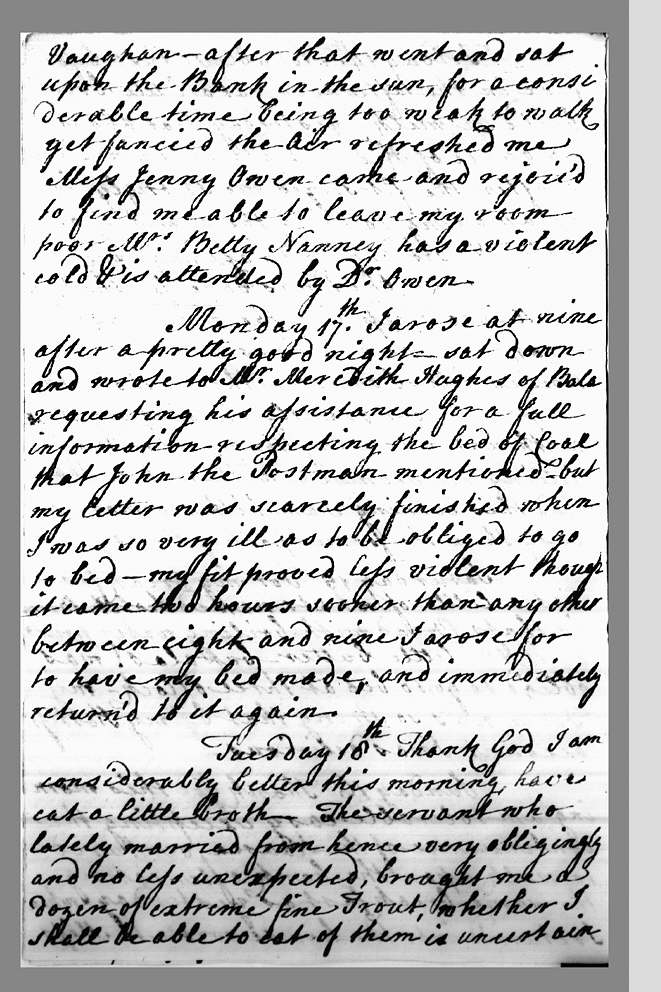





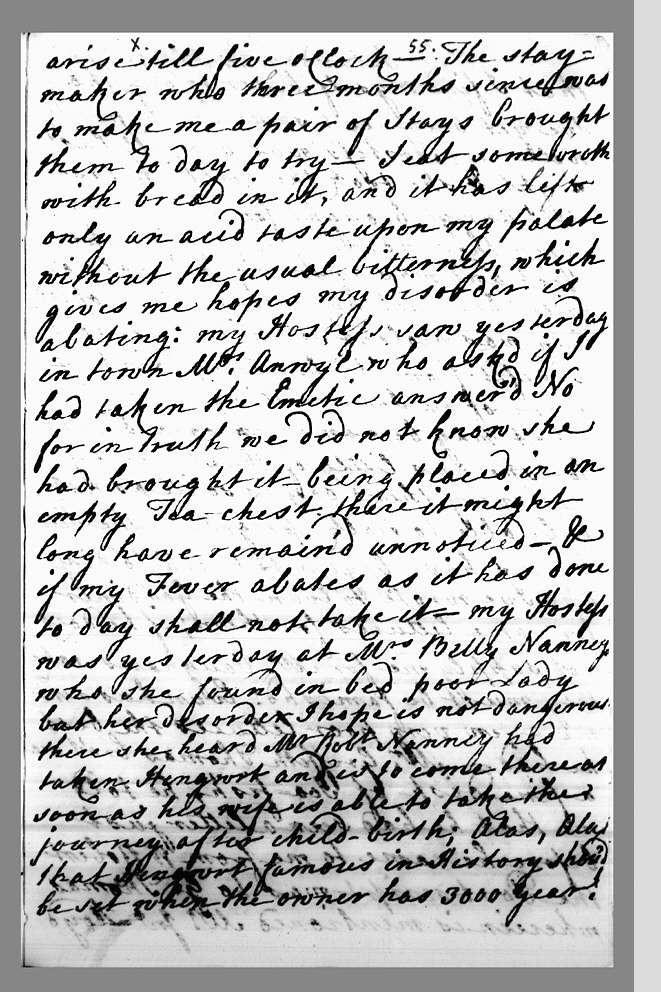











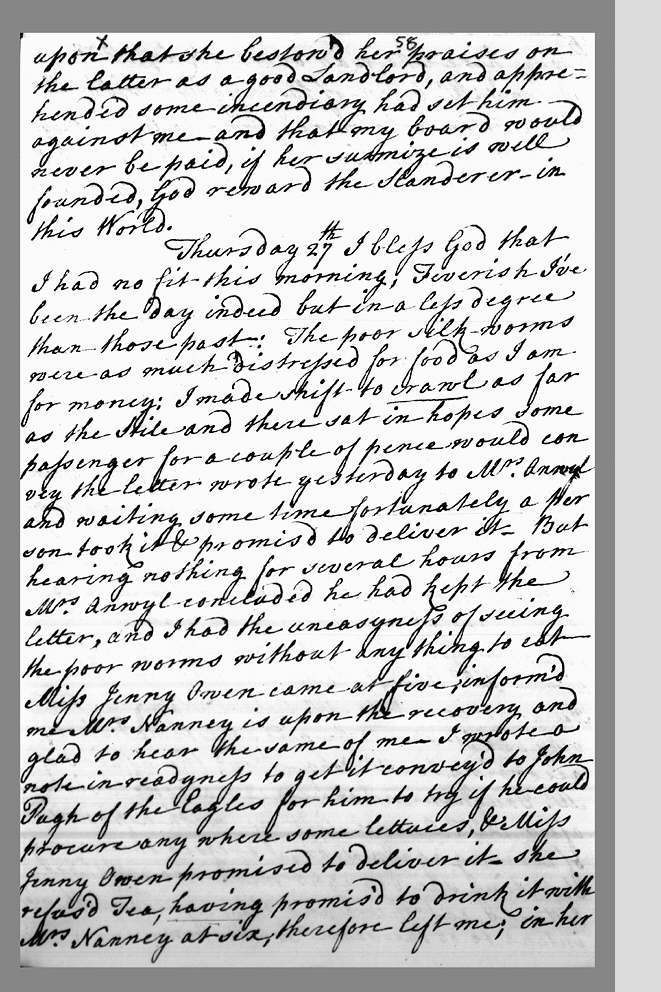









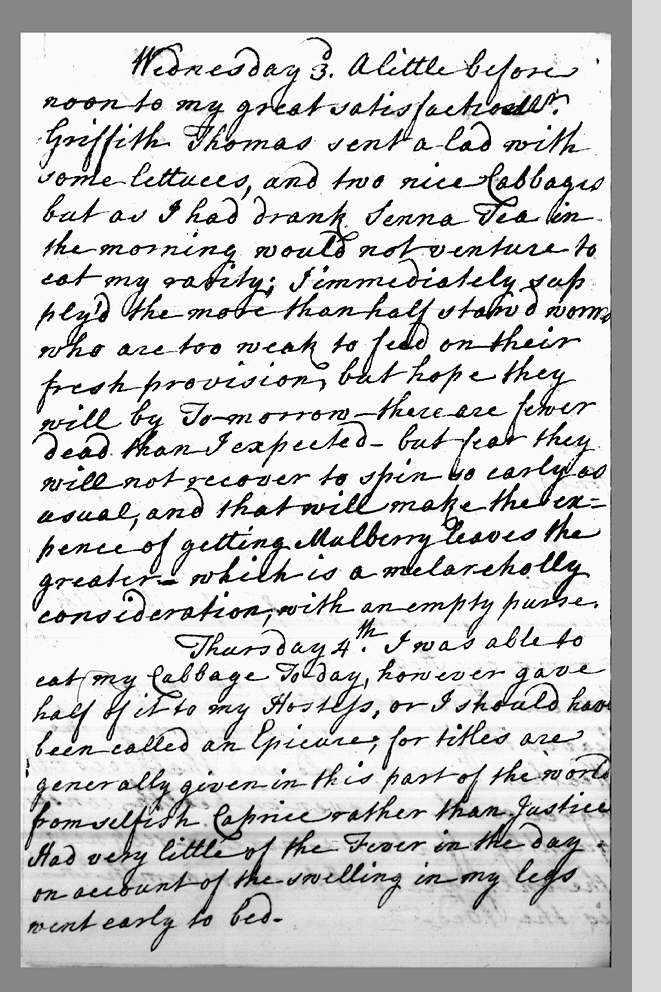

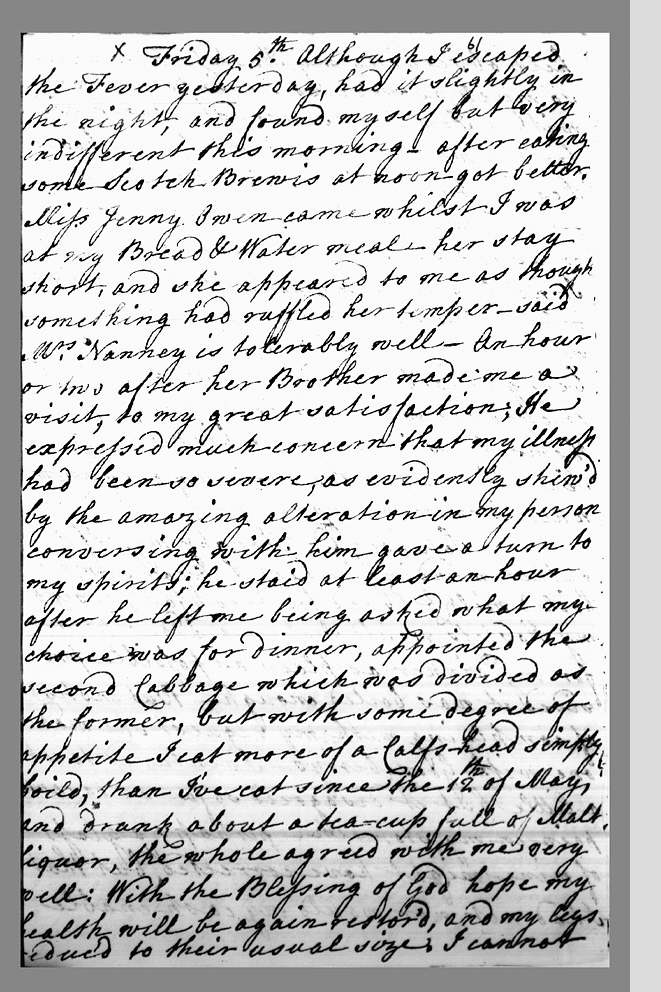

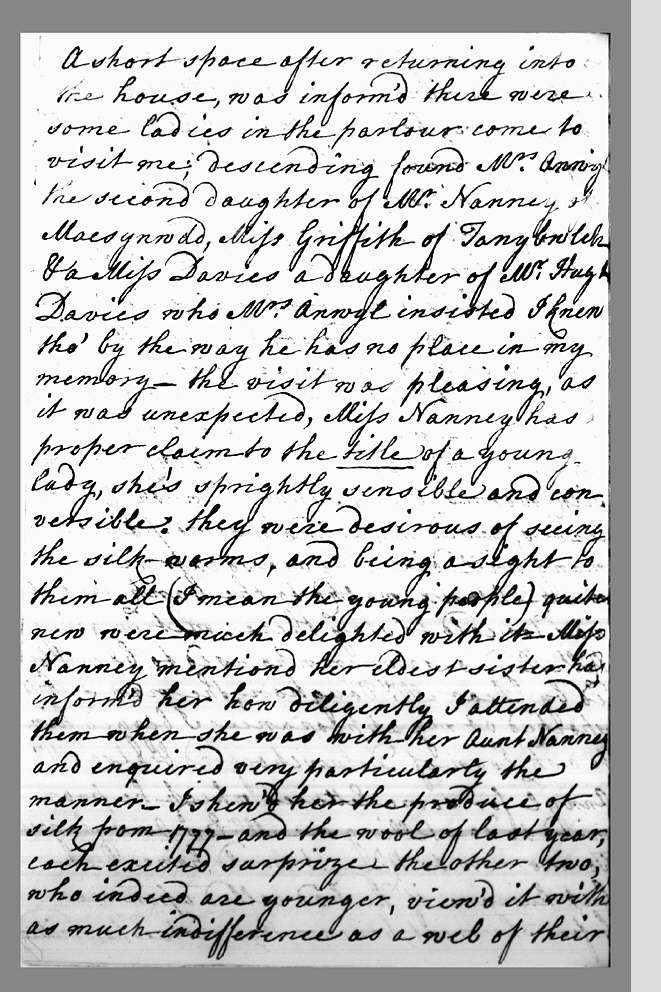

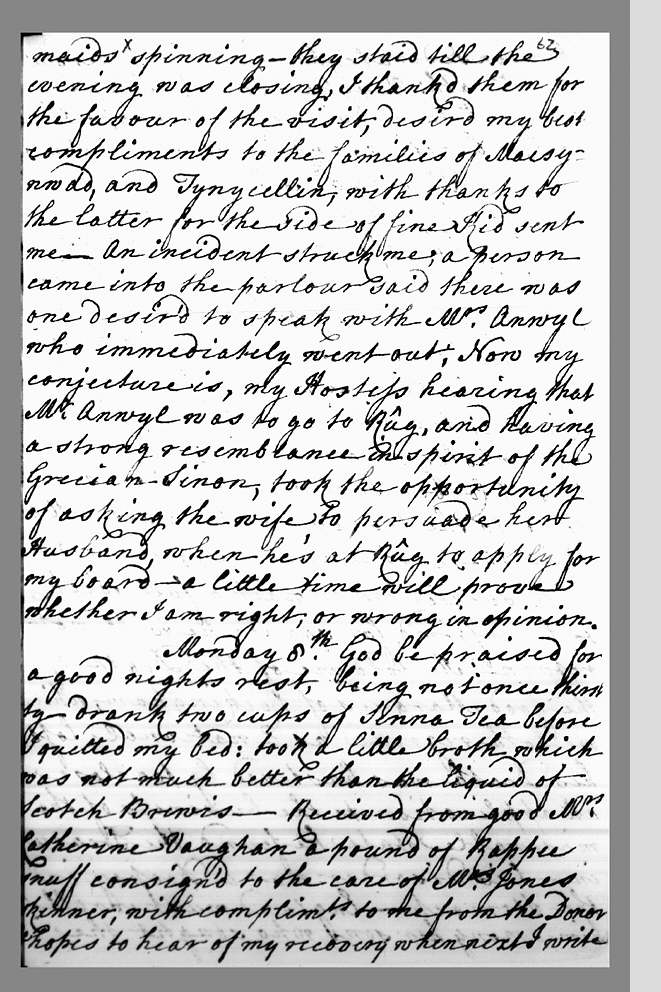



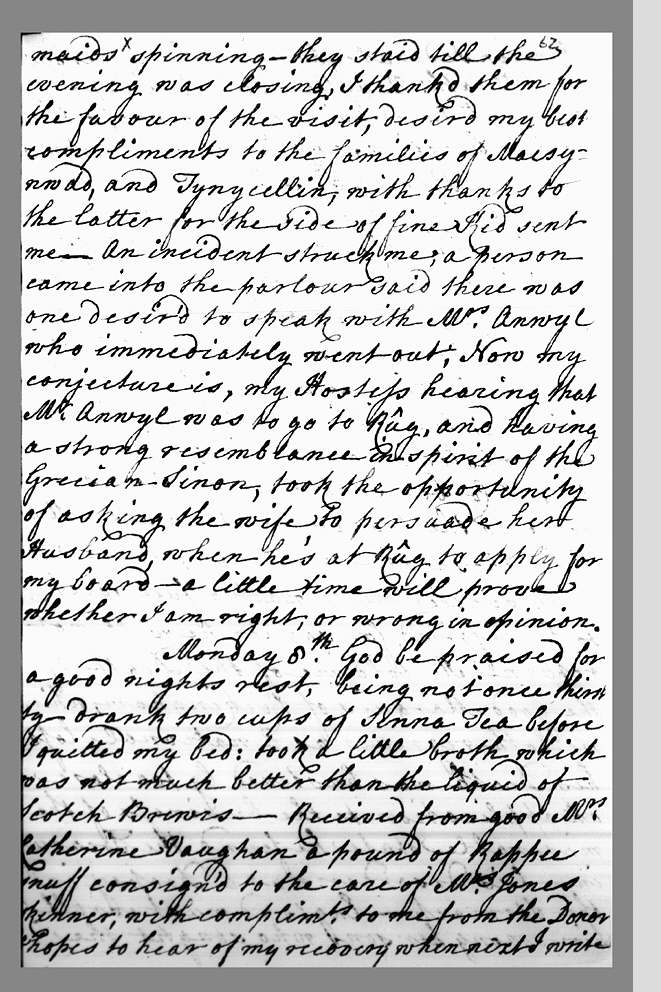





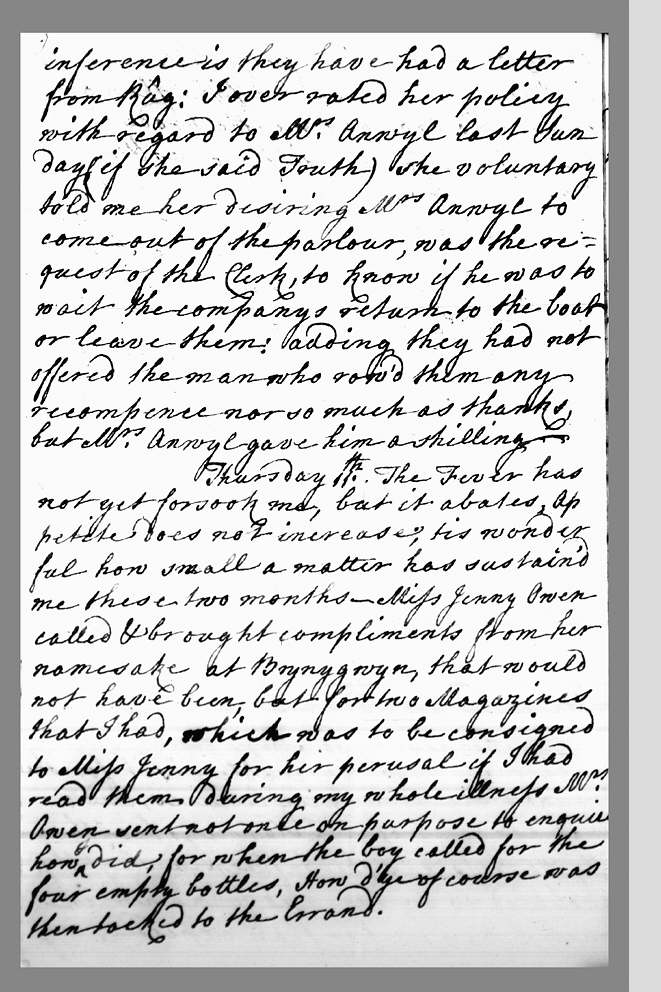

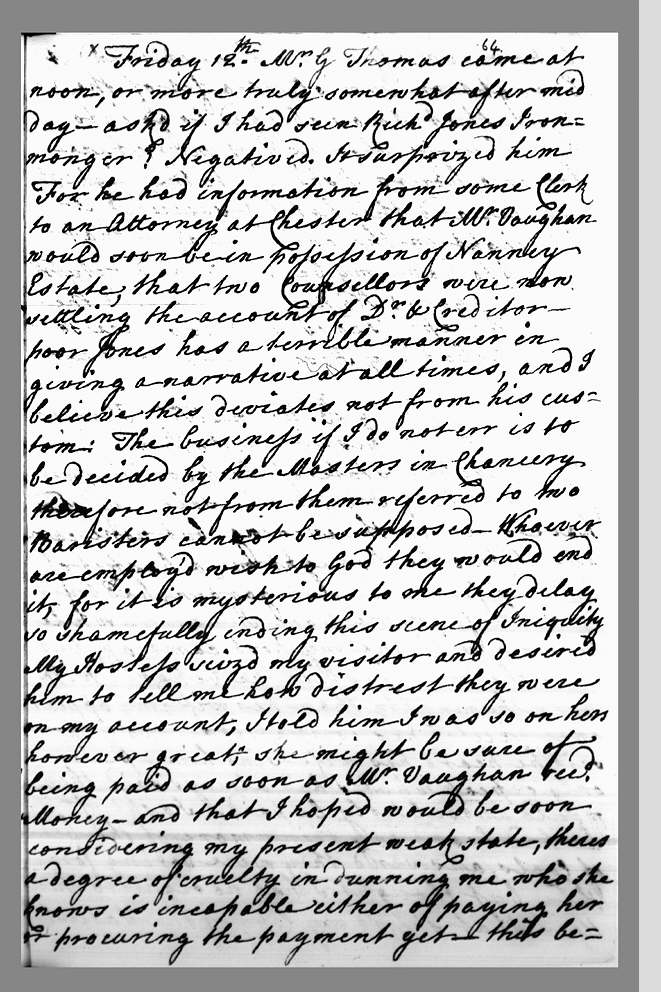



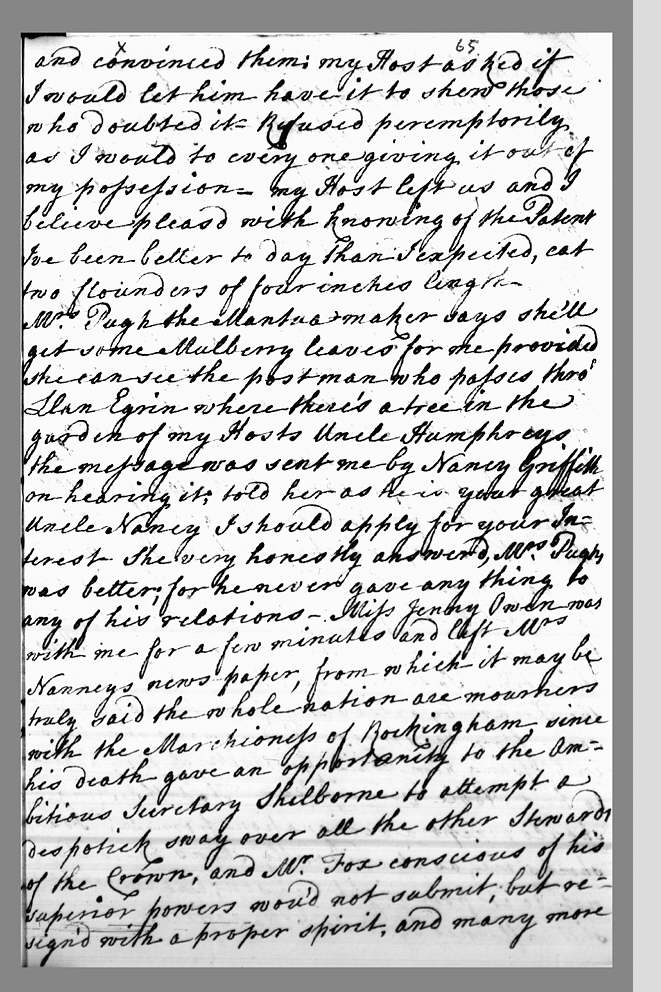






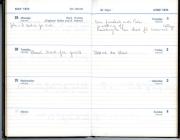
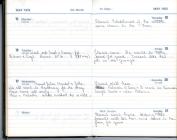


Do you have information to add to this item? Please leave a comment
Comments (1)
You must be logged in to leave a comment